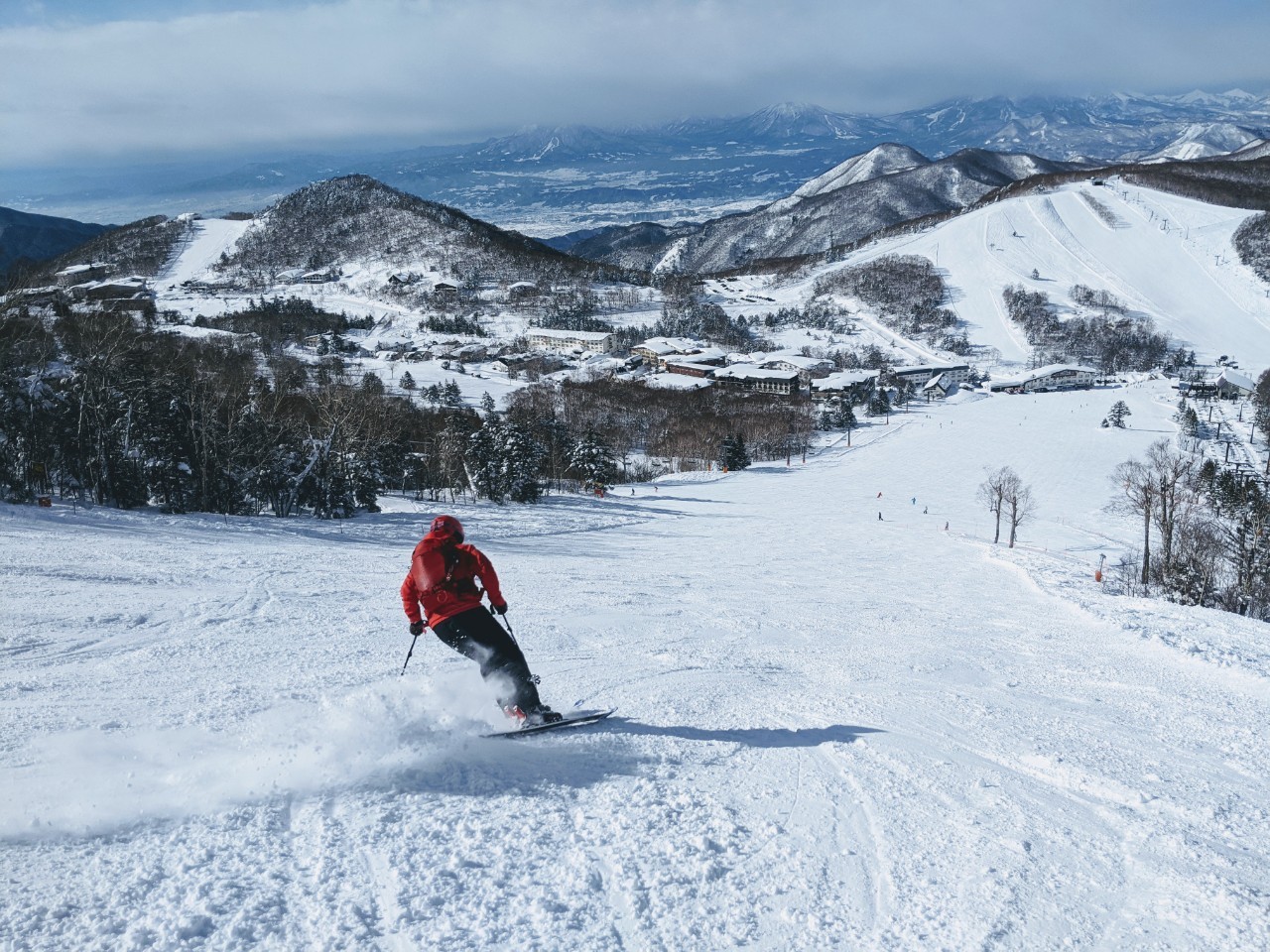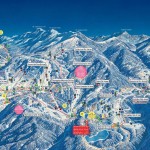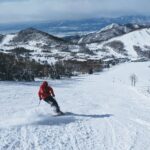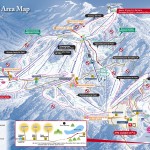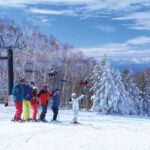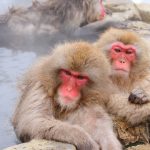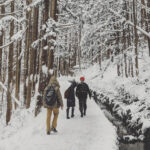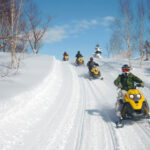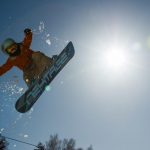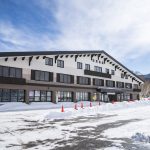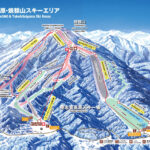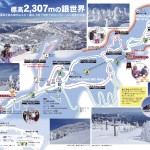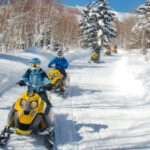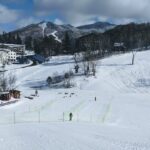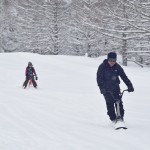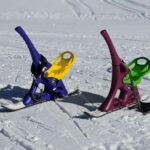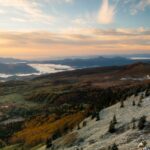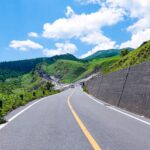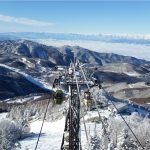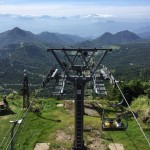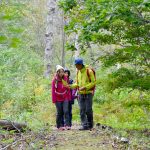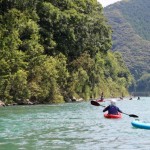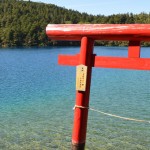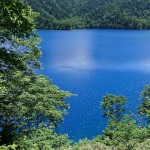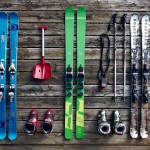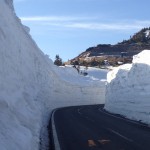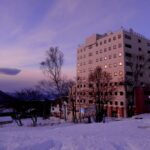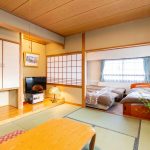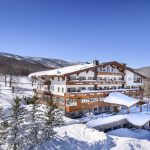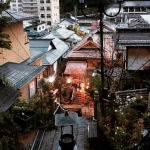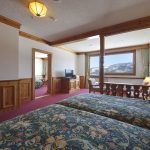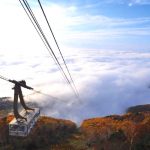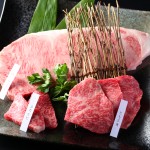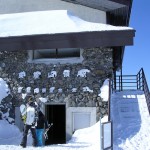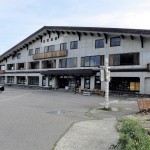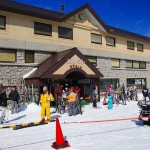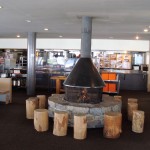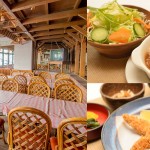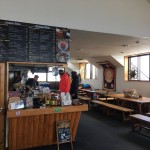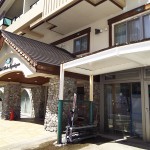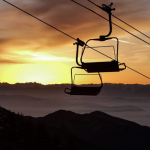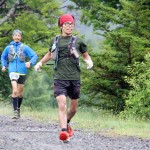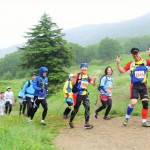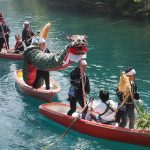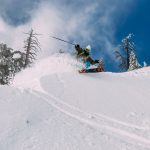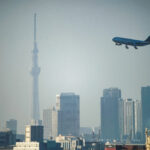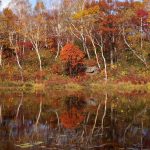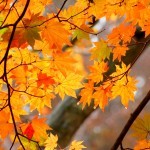Joshinetsu Kogen National Park

Stretching across Nagano, Niigata and Gunma, Joshinetsu Kogen National Park – 上信越高原国立公園 – is the fourth largest national park in Japan. Formed by intense volcanic activity and lava flows over millions of years, today’s landscape is much more tranquil yet retains a couple of ever present reminders of the powerful forces that forged, and continue to forge, this remarkable landscape. On this page you will find the following information:
— Wildlife
— Gondolas. Ropeways & Chairlifts
— Accommodation inc. Hot Spring Villages
— Getting To & Around Joshinetsu Kogen
— Book With Us! Nagano’s No.1 Tour & Charter Operator
Among its multiple peaks, Mt Asama and Mt Kusatsu-Shirane are both active volcanoes, with Asama laying claim to being the most active volcano on Japan’s main island of Honshu while the Yugama Crater Lake of Kusatsu-Shirane is one of the most acidic lakes in the world.
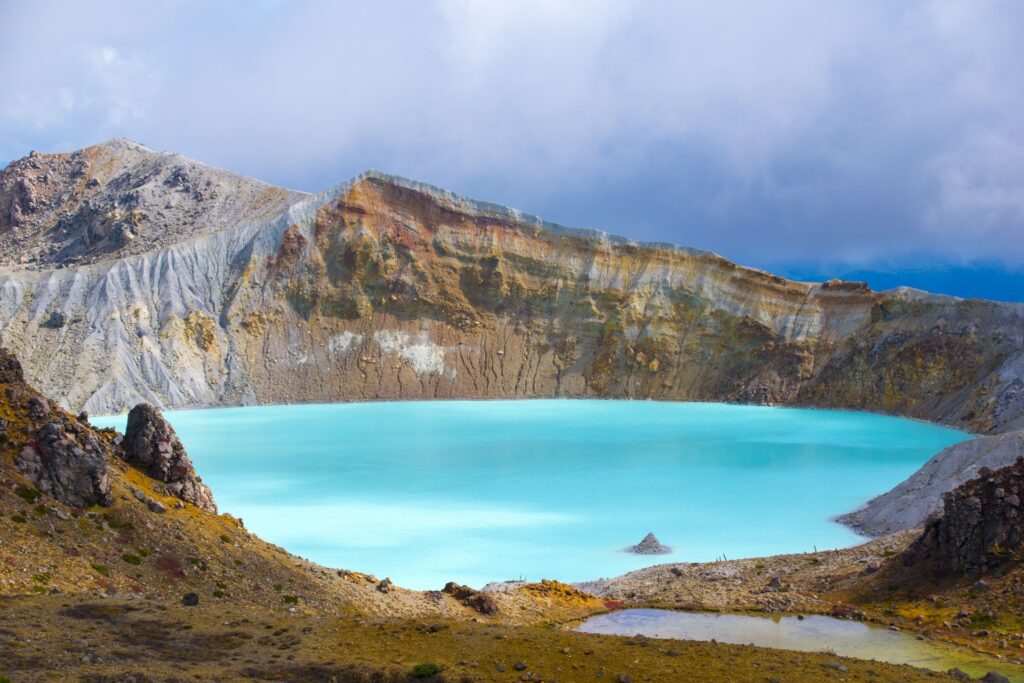
But don’t let those somewhat fearsome claims put you off! Joshinetsu is a fertile landscape of alpine forests, ponds, lakes and marshes with multiple peaks rising above 2000 metres. The park is blessed with multiple hot spring areas – a product of the volcanic activity below – with a diverse variety of flora and fauna drawing nature enthusiasts from around the world.
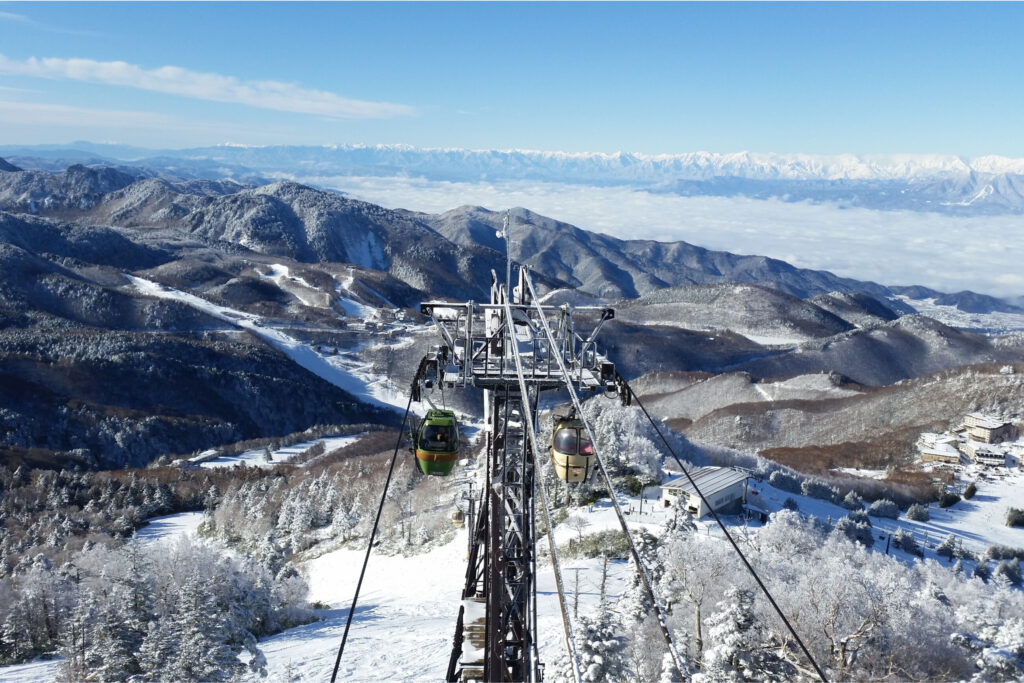

With the Jigokudani Monkey Park and multiple ski areas – including Japan’s largest and highest ski resort, Shiga Kogen – lying within the boundary of the park, Joshinetsu Kogen is one of the most popular winter destinations in Central. Yet the park has just as much to offer from spring to autumn, with some of Japan’s best alpine hiking trails, nature and wildlife photography, and autumn leaves attracting an increasing number of visitors each year. And if for no other reasons, the park’s higher elevation means that temperatures are consistently around 10°C lower they are in the valley and cities below, offering a welcome escape from the heat and humidity of summer.
THE STATS & FACTS

Designation: Joshinetsu Kogen was declared a national park in 1949.
Location: the park sits within three prefectures: Nagano, Gunma & Niigata.
Size: 148,194ha / 1481.94km² / 572.18mi² = 4th largest national park in Japan.
Highest point: Mt Asama 2,568m / 8,425ft.
Other major peaks: Mt Azumaya 2,354m / 7,723ft; Mt Kusatsu-Shirane 2,160m / 7,086ft; Mt Naeba 2,145m / 7,037ft; and Mt Tanigawa 1,977m / 6,486ft.
Overview: Joshinetsu Kogen is defined by its multiple mountain peaks and dramatic landscape formed by volcanic activity over many miliennia. While many of the mountains within the park are extinct volcanoes, Mt Asama and Mt Kusatsu-Shirane remain active and feed the region’s many hot springs with an abundance of thermal water. Lava flows have formed much of the landscape, much of which is now filled by water and an extensive network of ecologically important ponds, lakes and marshses. Between the mountain peaks, a mixed landscape of alpine forests and open grasslands gradually gives away to dramatic rock faces that rise above the tree line creating striking vistas.
HIGHLIGHTS
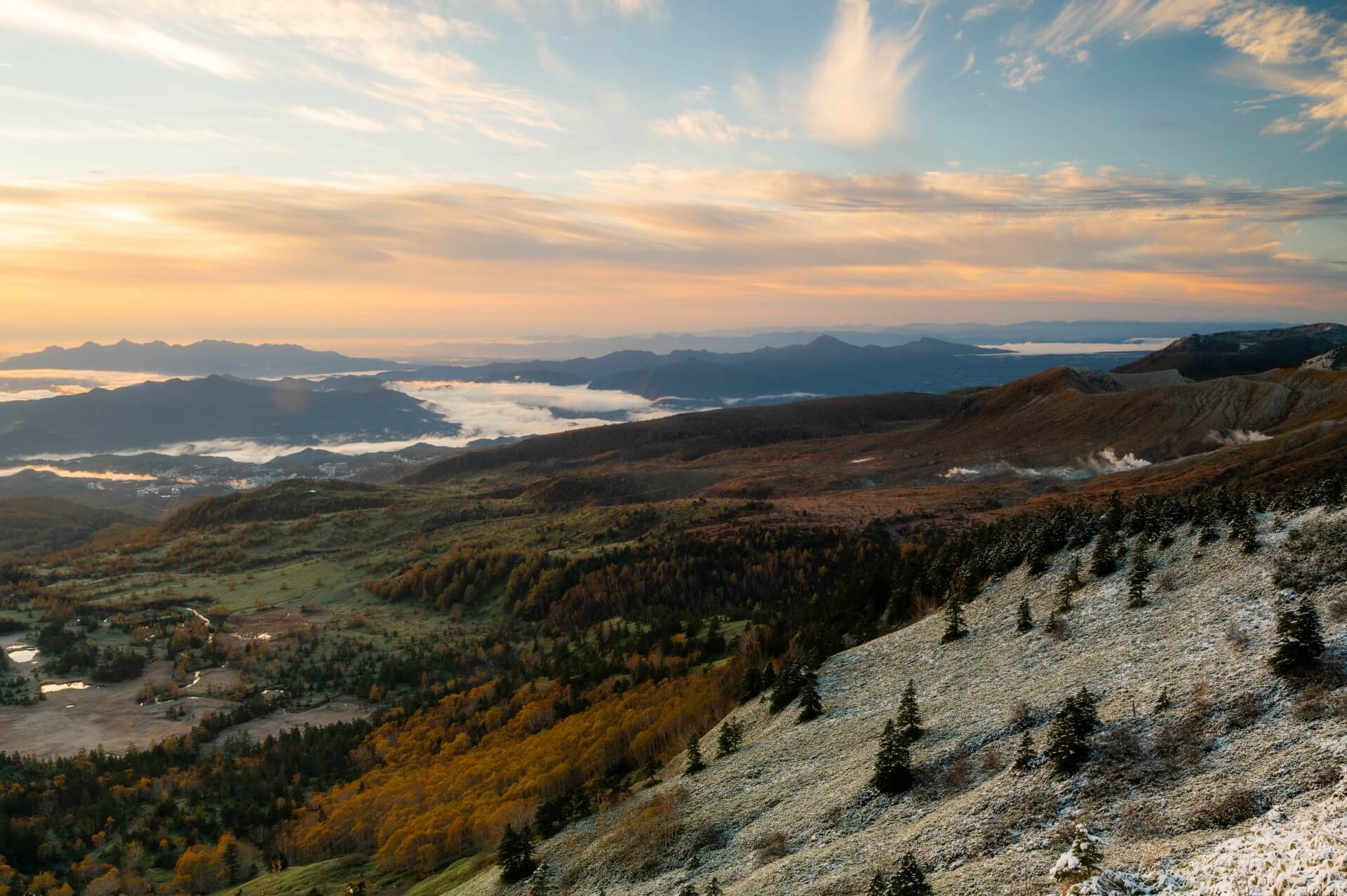
As Japan’s fourth largest national park, it is difficult of capture everything that Joshinetsu Kogen has to offer on one page. Like any national park, the real attraction is getting out into the open and off the beaten path and far away from the maddening crowds. In terms of its best known attractions, these are some of our favourite highlights:
Jigokudani Monkey Park
Situated in the foothills of the park, the Jigokudani Monkey Park is home to Nagano’s famous hot spring-loving monkeys. Most famous for their antics in winter, the monkeys – Japanese macaques to be exact – in fact come to the park all year round. While one of many troops that call Joshinetsu Kogen home, they this is the only troop of monkeys in the world observed to soak in hot springs – a natural behaviour they learned through watching humans do the same. Located in between Nagano City and the national park, the monkey park and surrounding Yamanouchi area is the western gateway to Joshinestsu Kogen.
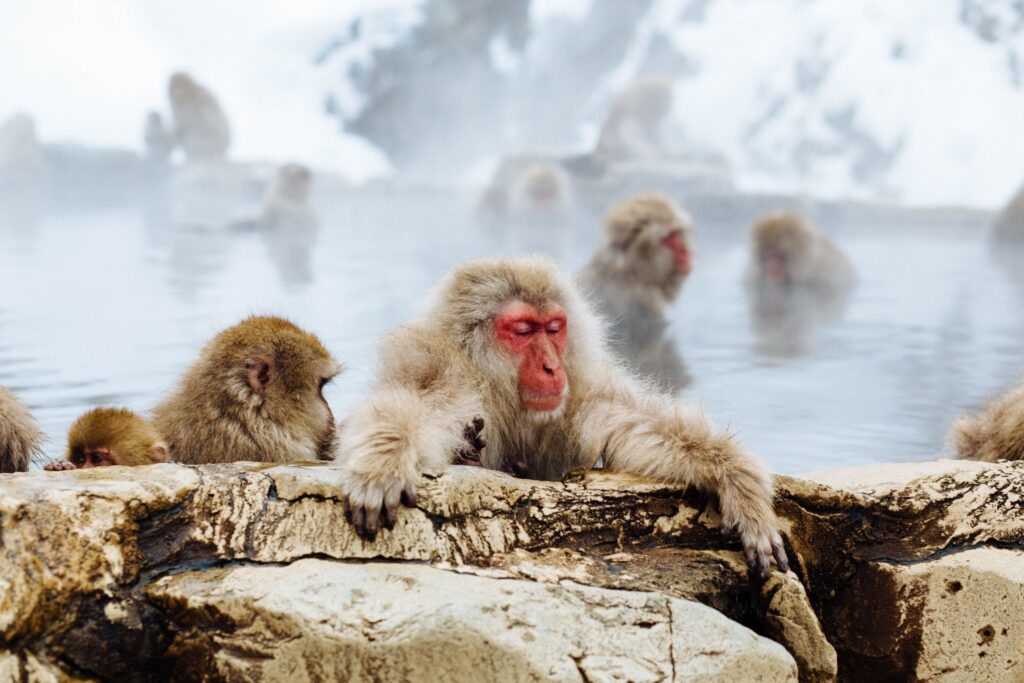

Shiga Kogen Highlands
Driving into the national park from Nagano City, you’ll first arrive in the area generally referred to as Shiga Kogen Highlands. Designated as a UNESCO Biosphere Reserve in 1980, Shiga Kogen Highlands accounts for just over 30,000ha / 300km² of the overall park. Formed by volcanic activity over millions of years, the region is defined by its multiple peaks – including Mt Kusatsu-Shirane – and alpine valleys of mixed forest, meadows and around seventy ponds, lakes and marshes. Home to an equally diverse range of wildlife including Japanese macaques, black bears, ‘kamoshika’ – a type of goat, golden eagles and more. From spring to autumn, Shiga Kogen Highlands offers some of Japan’s most enjoyable alpine walking, with most trails suitable to anyone of reasonable fitness while in winter, it’s all about skiing and snowboarding at Japan’s largest and highest resort…
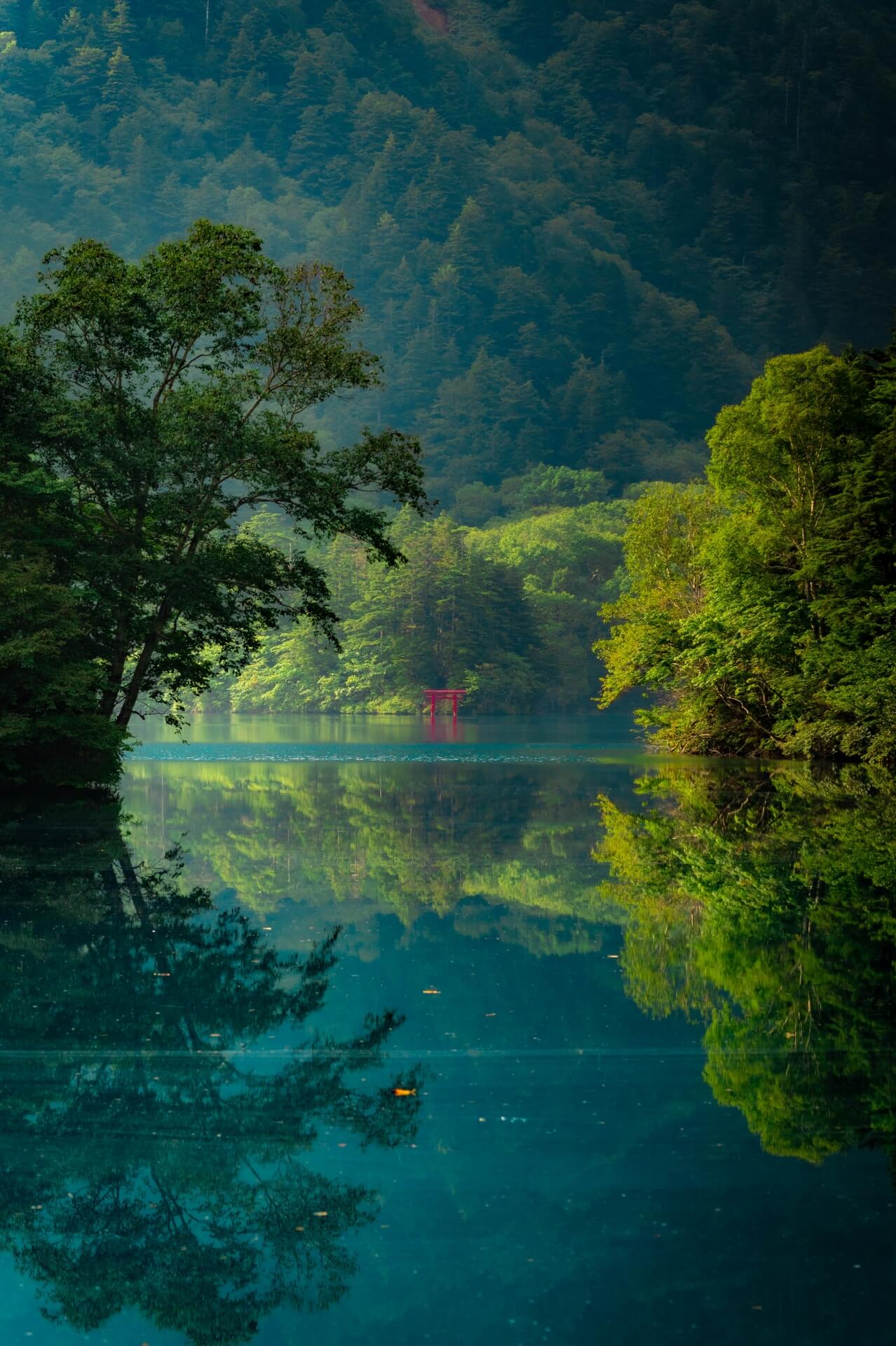
Shiga Kogen Ski Resort
Sitting within Shiga Kogen Highlands, the eighteen ski fields of Shiga Kogen Ski Resort combine to offer Japan’s largest extent of interconnected terrain and ski runs, while also boasting its highest chair-lifted ski run at 2307 metres. Whereas most other resorts are maxing-out between 1800 to 1900 metres, Shiga Kogen is just getting going at that point with multiple peaks over 2000 metres – the only resort in Japan that can boast such credentials. Shiga’s higher elevation and topography combine to bless it with Nagano’s longest season – typically open from late-November until late-April (or even into May) – and most reliable snow conditions. While it doesn’t receive as much as resorts nearer to the coast such as Myoko Kogen and Hakuba Valley, Shiga’s inland location mean that snow is drier and stays in better condition for longer (thanks to the elevation and topography), while its location within the national park has saved it from over-development.
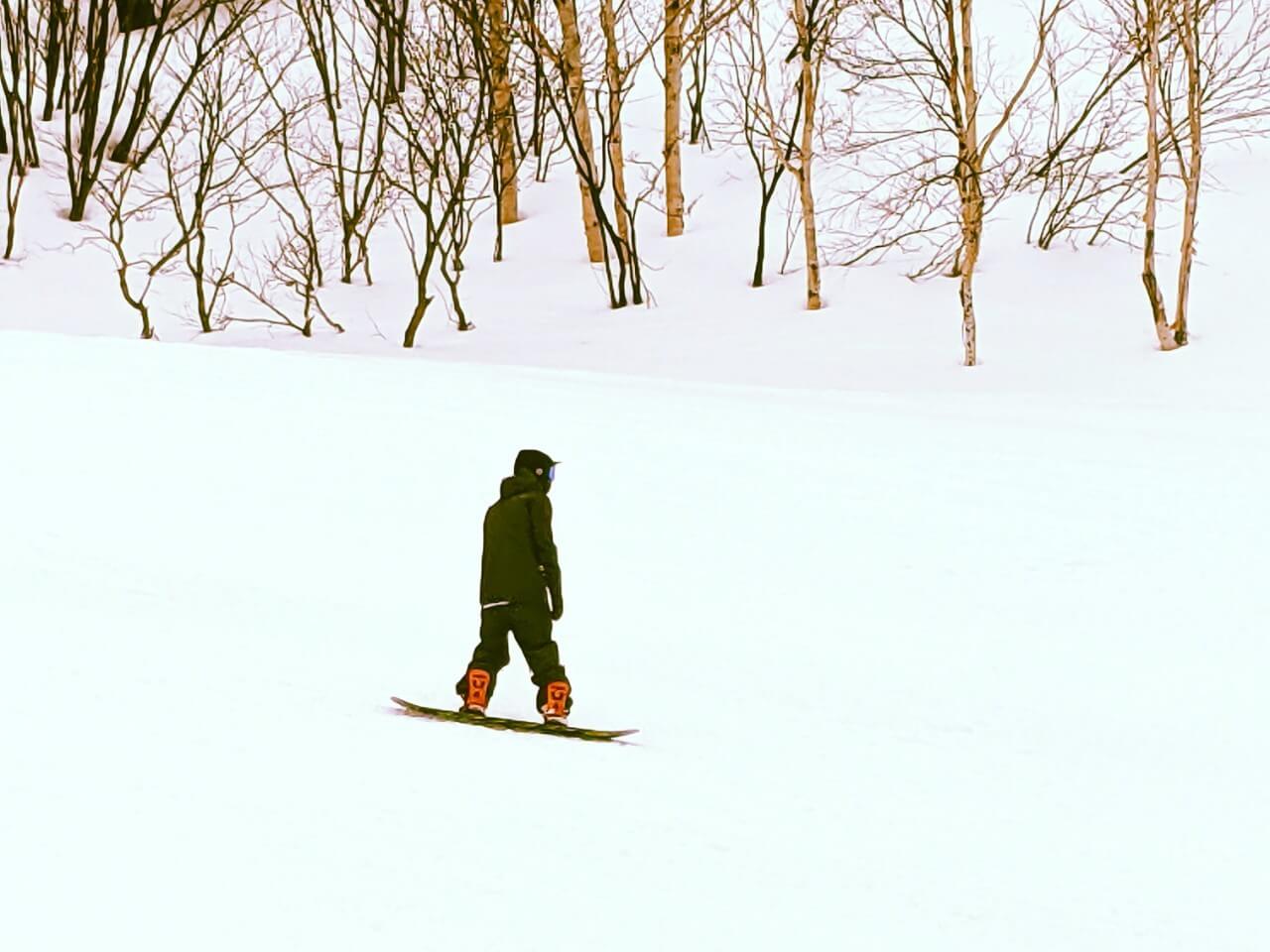

Mt Kusatsu-Shirane
Mt Kusatsu-Shirane is located on the south-east boundary of Shiga Kogen Highlands and in the approximate middle of the overall national park. At 2,160 metres above sea level, it is one the highest volcanoes in Japan and boasts the most acidic lake in the world – the Yugama Crater Lake – in its caldera. Due to heavy snow in winter, the area around Shirane can only be visited from mid-April until early-November. Hiking trails span-out around the caldera through fertile alpine valleys home to unique flora and fauna.
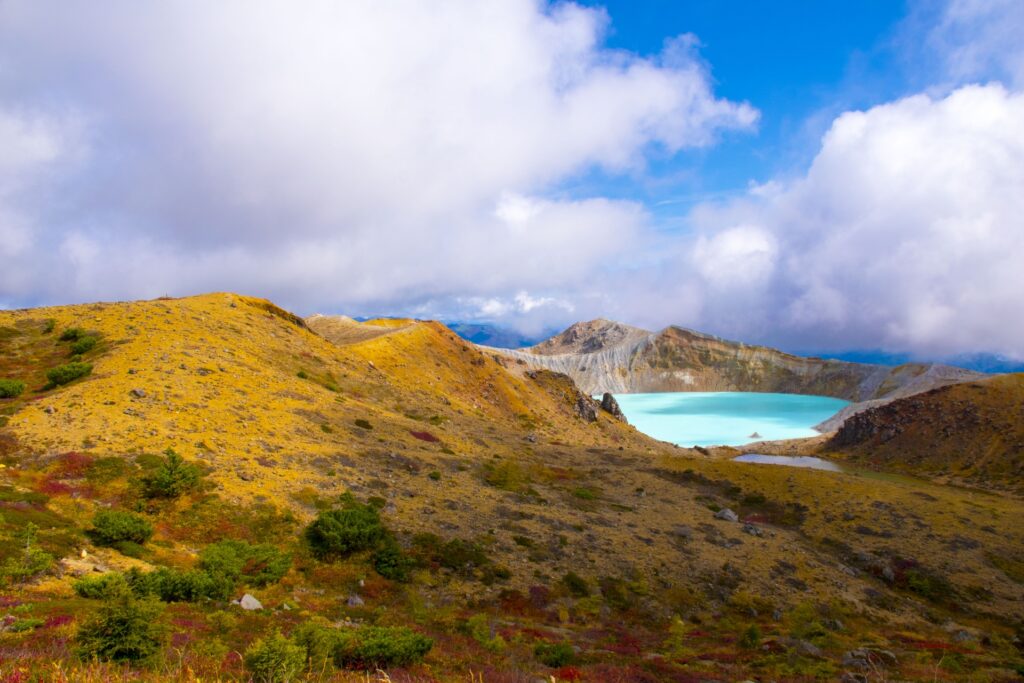
Kusatsu Shirane Kogen Route
Open from May to mid/late-November, the Shiga Kusatsu Kogen Route is a scenic alpine driving route that winds through the Joshinetsu Kogen National Park. Running from the gateways of Kusatsu Onsen – see below for details – toward the Jigokudani Monkey Park, the route takes visitors past Mt Shirane, Mt Yokote and other scenic areas deep into the national park.
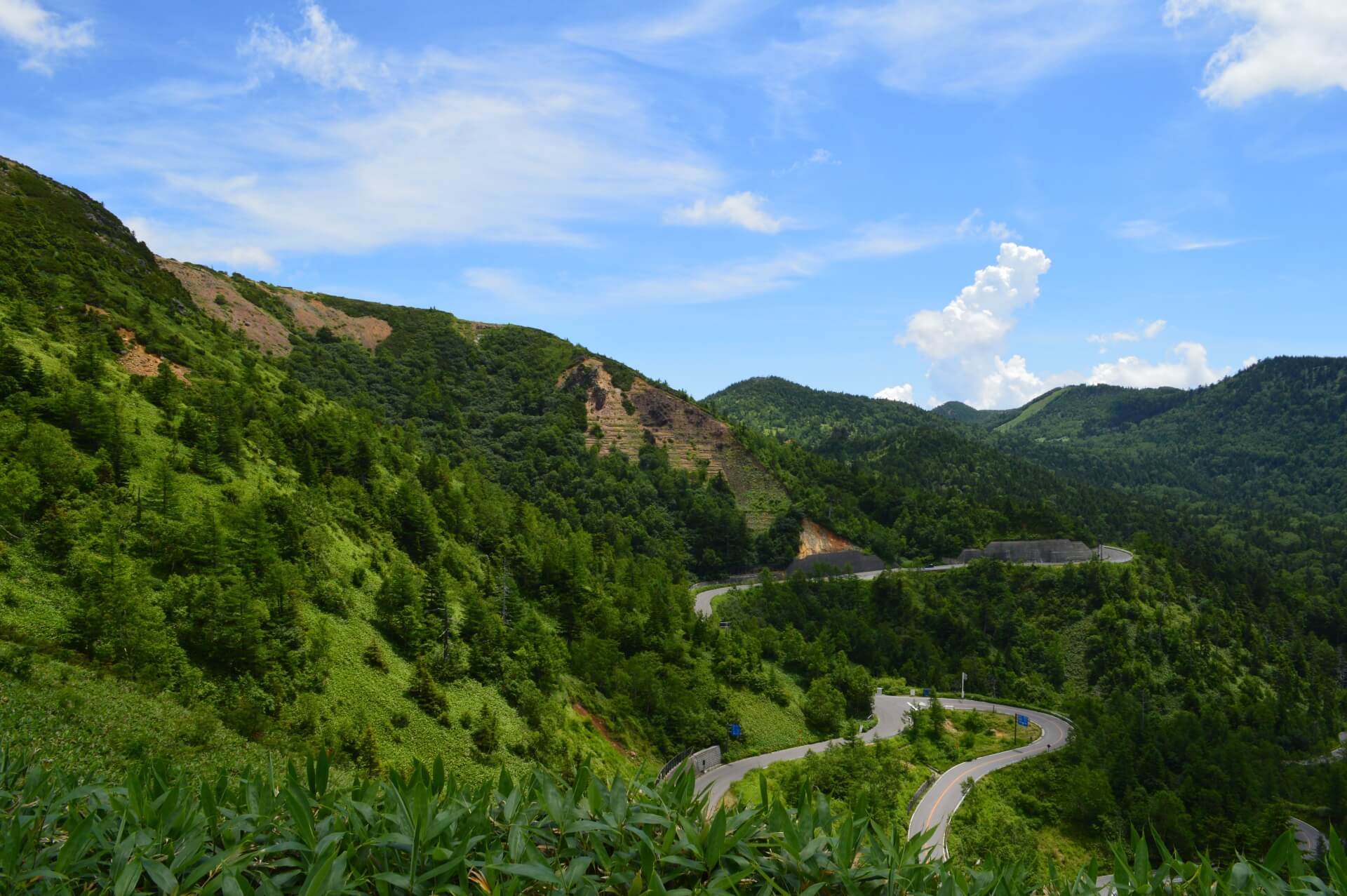
In doing so, visitors can stop-off and access some of the most beautiful points in the national park including hiking trails around Mt Kusatsu-Shirane, while having plenty of accommodation options along the way and especially at the two gateways of Karuizawa and the Jigokudani Monkey Park and surrounding hot spring towns of Kanbayashi Onsen, Shibu Onsen and Yudanaka Onsen – see below for details.
Mt Asama & Onioshidashi Volcanic Park
At 2,568 metres above sea level, the summit of Mt Asama is the highest peak in the national park and also lays claim to being the most active volcano on Japan’s main island of Honshu. Climbing Asama is banned, as much for the exposed nature of its trails which can put hikers at risk as much as it is for any volcanic activity. Located several kilometres from the mountain itself, the Onioshidashi Volcanic Park is a remarkable destination – one that demonstrates the just how the surrounding landscape was formed. The park is comprised of the Asama Volcano Museum – exhibiting information and displays about Mt Asama and the geography of volcanoes – and, most strikingly, an expansive natural ‘garden’ of immense boulders and rocks ejected from the volcano during its last major eruption in 1783. Walking trails now meander between the boulders making-up both short and long walking circuits. Thriving within and on those boulders, countless varieties of rare alpine plants grow in other-worldly landscape including a naturally glowing moss unique to the region.
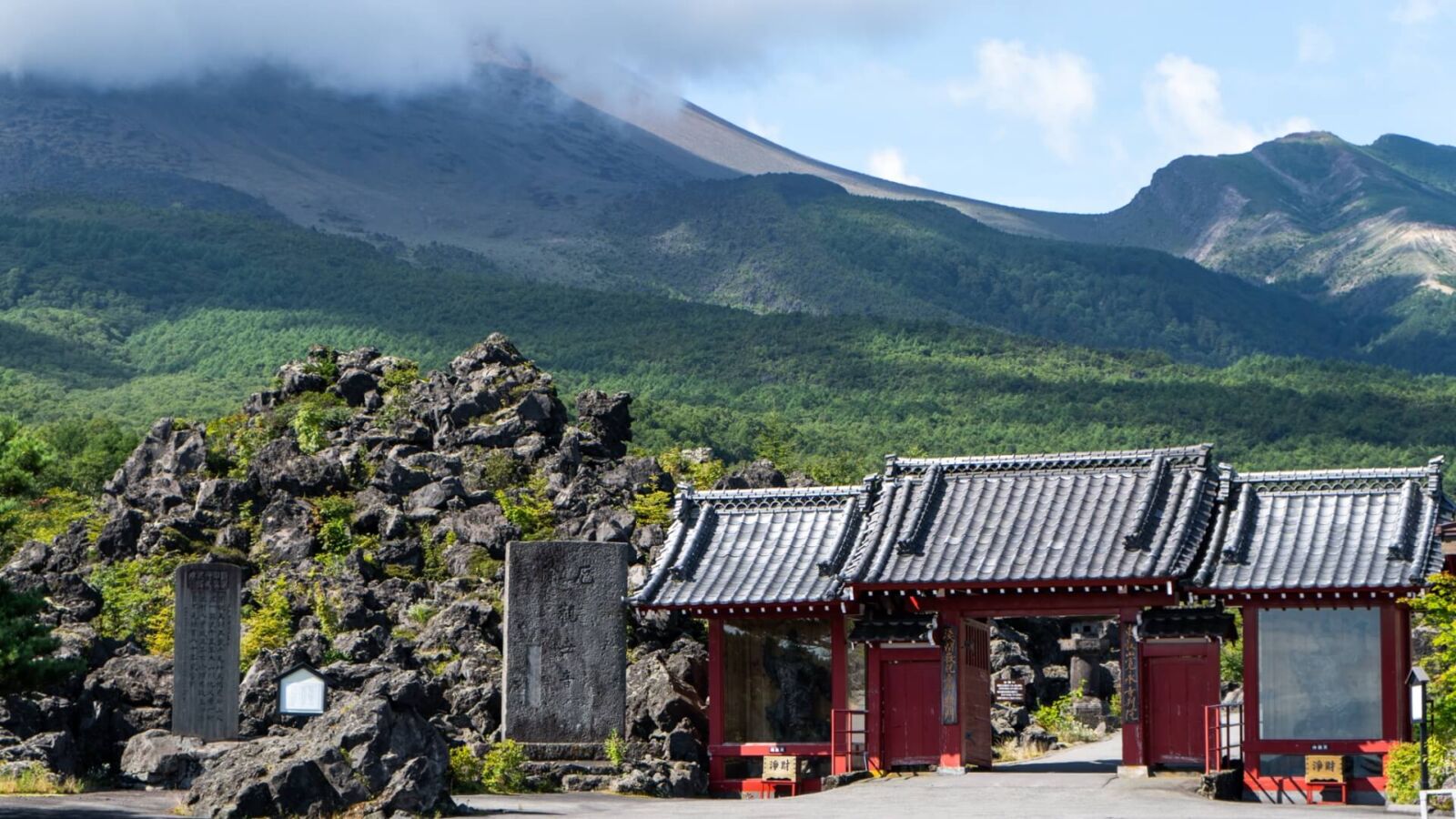
Sitting within the boulders, a temple – dedicated to Kannon, one of the most important Buddhist bodhisattvas in Japan – is a photogenic focal point in the shadow of the brooding mountain and all within easy reach of the resort town of Karuizawa.
Mt Naeba
Located in Niigata and the north corner of the national park, Mt Naeba is another of Joshinetsu Kogen’s highest peaks – an area known for its heavy snow in winter and leisurely hiking from late-spring until autumn. The area is covered by beech forest and marshes, with alpine flowers putting on a spectacular show in summer. Naeba Ski Resort and the connecting Kagura Ski Resort are located here, two of the most popular ski resorts in Niigata. In summer, Naeba Ski Resort also plays host to Japan’s largest music festival, Fuji Rock – see below for details.
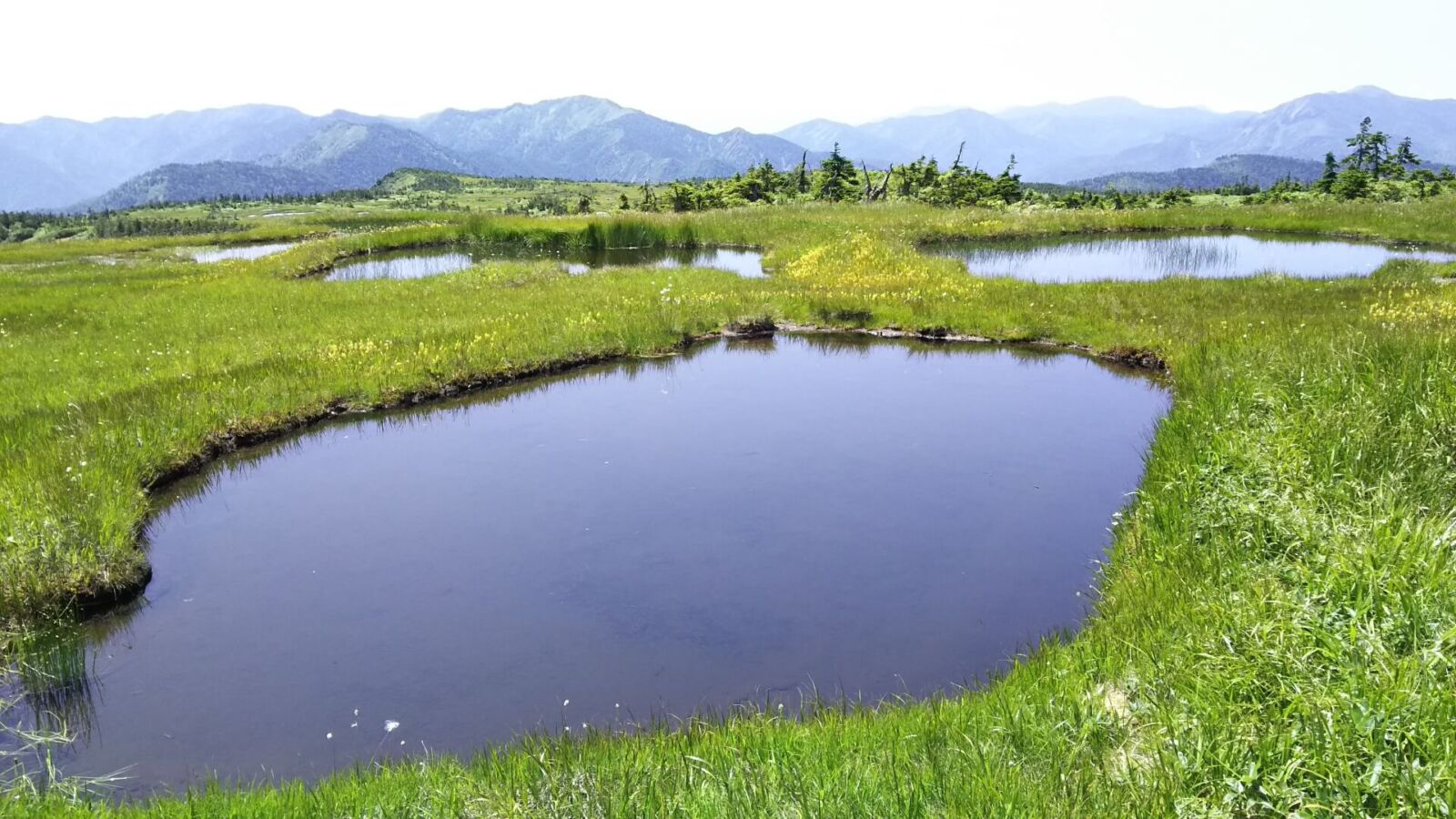
Mt Tanigawa
Though just shy of 2000 metres in height, Mt Tanigawa is a dramatic mountain known for its heavy snow in winter and challenging hiking through summer and autumn. Located of the border of Niigata and Gunma – in the north-east of the national park – Tanigawa offers some of Central Japan’s most thrilling winter mountaineering while in summer, its sheers cliffs and imposing rock faces attract climbers from all over the world. Visitors wanting a less challenging time at Tanigawa can use the Tanigawadake Ropeway to ascend high into the mountain range and enjoy some fantastic walking trails, perhaps best experienced in autumn when the forests put on a spectacular display of colour. For experienced hikers and mountaineers, this is the gateway to the Tangigawa Mountain Range made-up of multiple peaks including Mt Shigekura, Mt Mantaro and Mt Tairappyo.
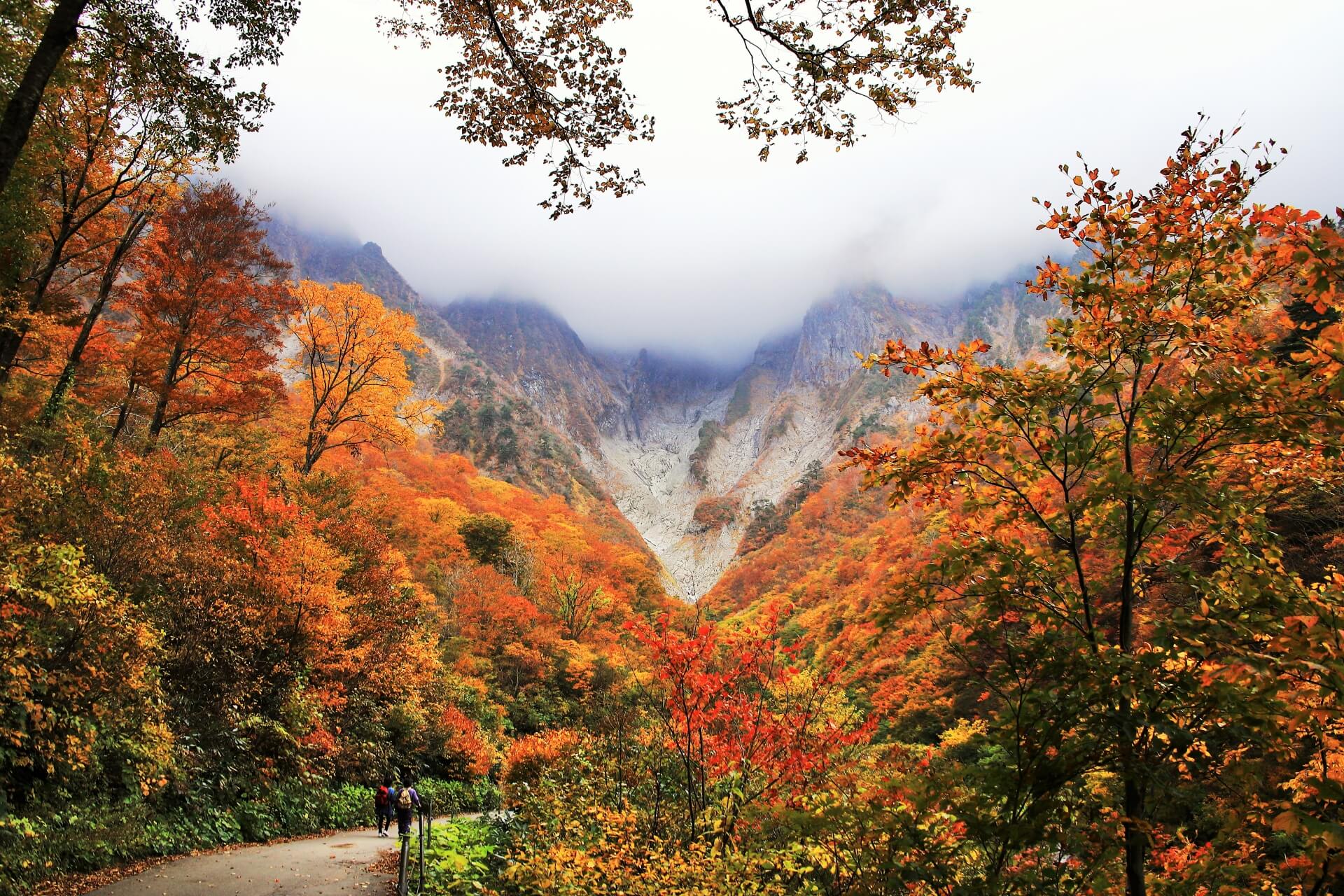
Karuizawa Wild Bird Sanctuary
Located in the resort town of Karuizawa – the southern gateway to the national park – the Karuizawa Wild Bird Sanctuary is one of four such locations in Japan. Covering around 100 hectares, the protected forest is home to at least eighty species of bird and forty species of mammals. The species are too many and diverse to list here but include native pheasants, woodpeckers, wagtails, owls and many, many more.
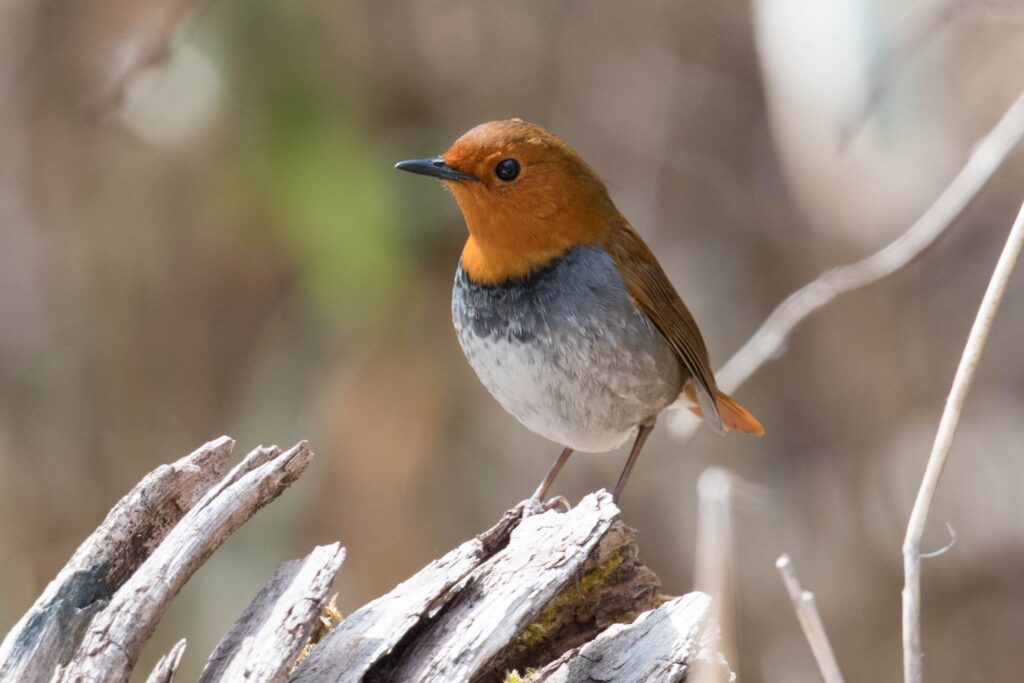
Hot Spring Villages
The volcanic activity within the national park means that the area is dotted with numerous ‘onsen’ (natural hot springs) including a couple of the most famous onsen villages in Japan. Lying just outside Joshinetsu Kogen, the Yamanouchi area is the western gateway to the park and home to three hot spring villages – Yudanaka, Shibu and Kanbayashi. Yudanaka Onsen and Shibu Onsen boast long histories as places of healing, known for their mineral-rich waters, while nearby Kanbayashi Onsen is home of some fantastic hot spring guesthouses and the always popular Jigokudani Monkey Park. Within the national park, hot springs are dotted throughout with many hotels boasting in-house onsen.
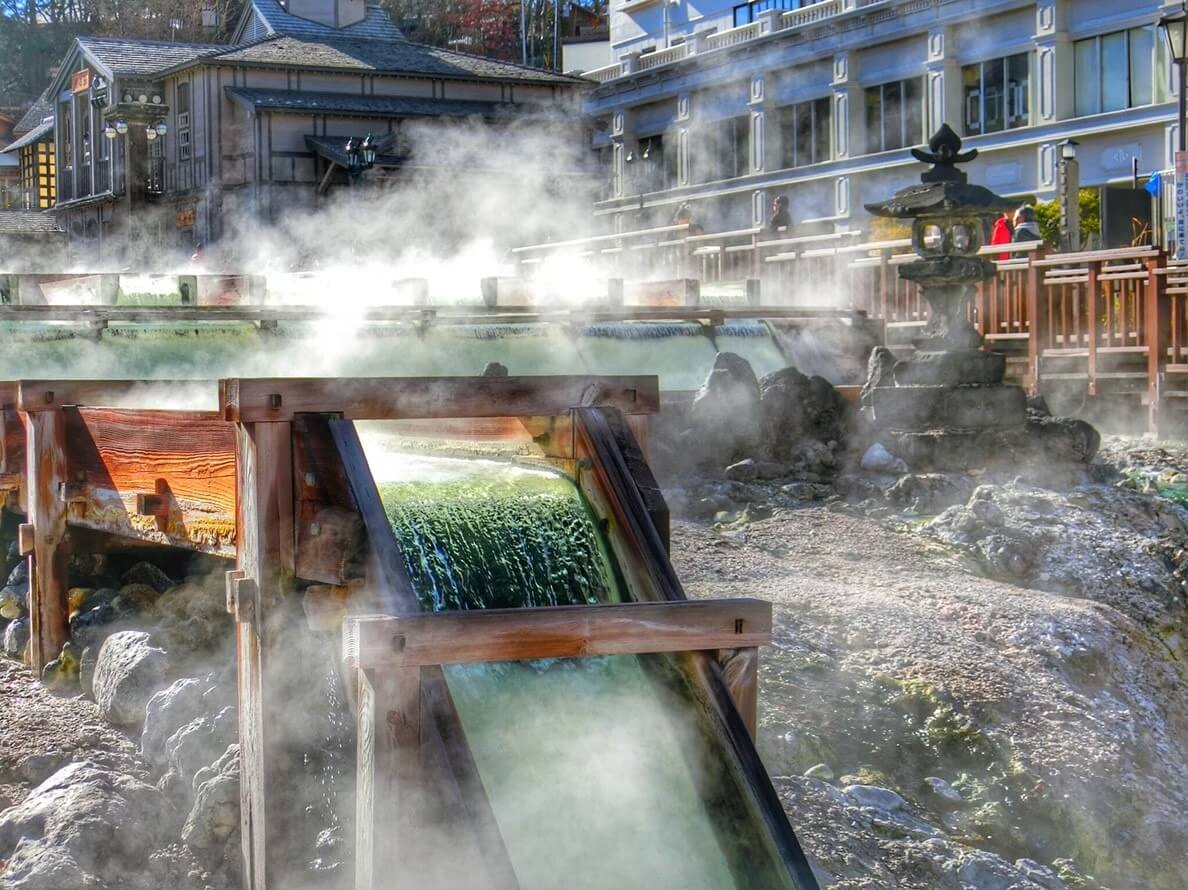
Most famously, the village of Kusatsu Onsen is one of the best known hot spring destinations in Japan. Kusatsu is centred around its iconic ‘yubatake’ (pictured above), an immense open-air ‘hot water field’ over which the thermal water flows in order to cool, before being used to fill the baths of the town’s many guesthouses. Within easy reach of Karuizawa, the southern gateway to the national park, Kusatsu is within easy reach of Mt Asama and multiple other hot spring villages including Manza Onsen and Shima Onsen – see ‘Accommodation inc. Hot Spring Villages’ below for further information.
WILDLIFE
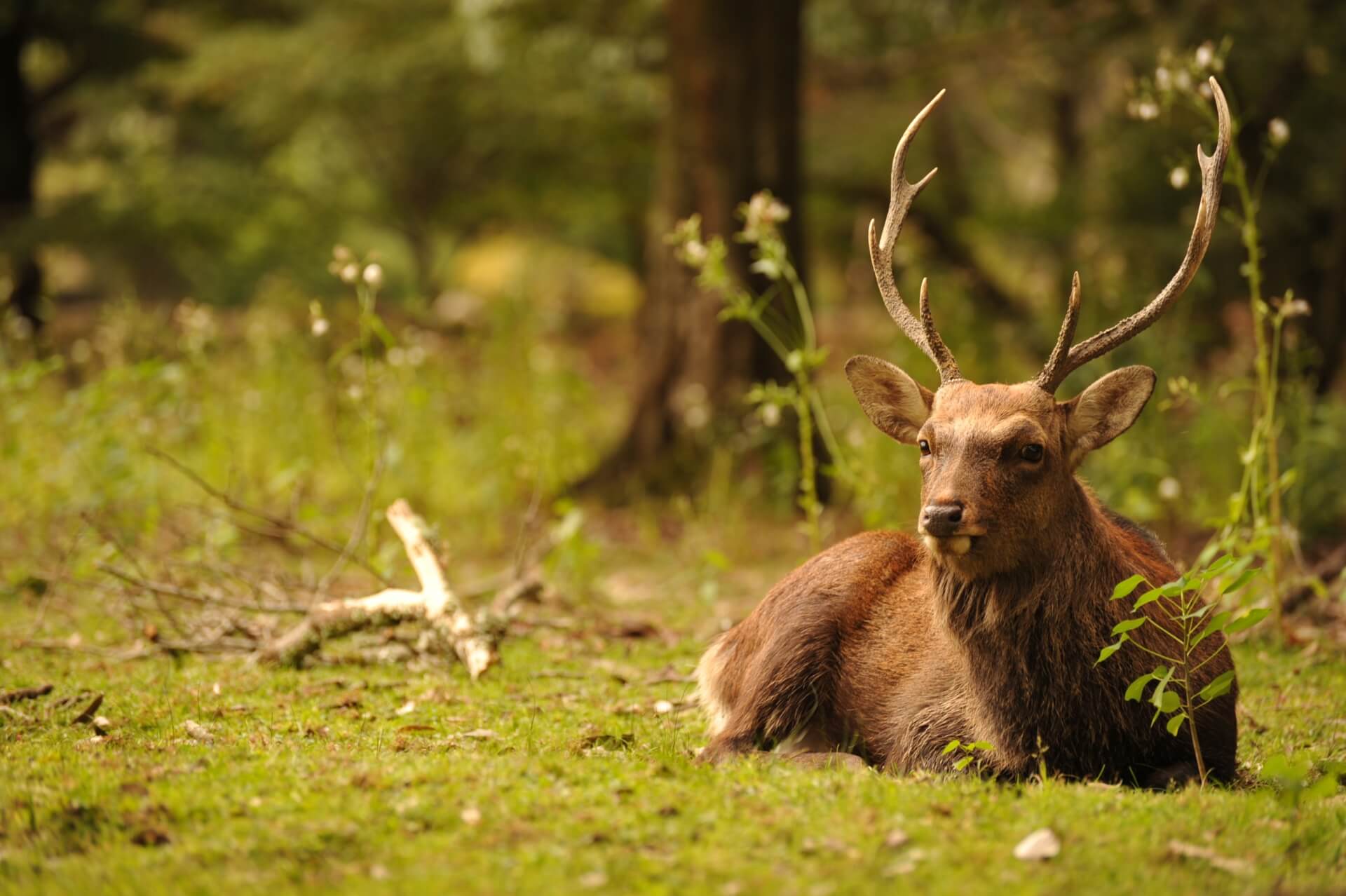
Joshinetsu Kogen is home to diverse range of wildlife ranging for rare alpine birds and insects to the famous snow monkeys and elusive black bears. There’s far too much to list here but here’s a couple of our favourites, of course starting with monkeys:
Japanese Macaque
Properly referred to as ‘nihonzaru’ (Japanese monkey) but more often simply referred to as ‘snow monkeys’, Japanese macaques are found throughout the country, from the sub-tropics of the south to the cold and snow of the north. Highly intelligent, adaptable and social, macaques live in troops of around 150 members following an alpha-male. They are territorial and typically move within a radius of several kilometres on a daily basis. Mature males reach an average of 57cm / 11kg while mature females are a little smaller at 52cm / 85.kg. These are the famous hot spring-loving monkeys of Nagano – a behaviour unique to the troop that comes to the Jigokudani Monkey Park – and the unofficial ambassadors of the region. You will find them moving around the national park in all seasons.
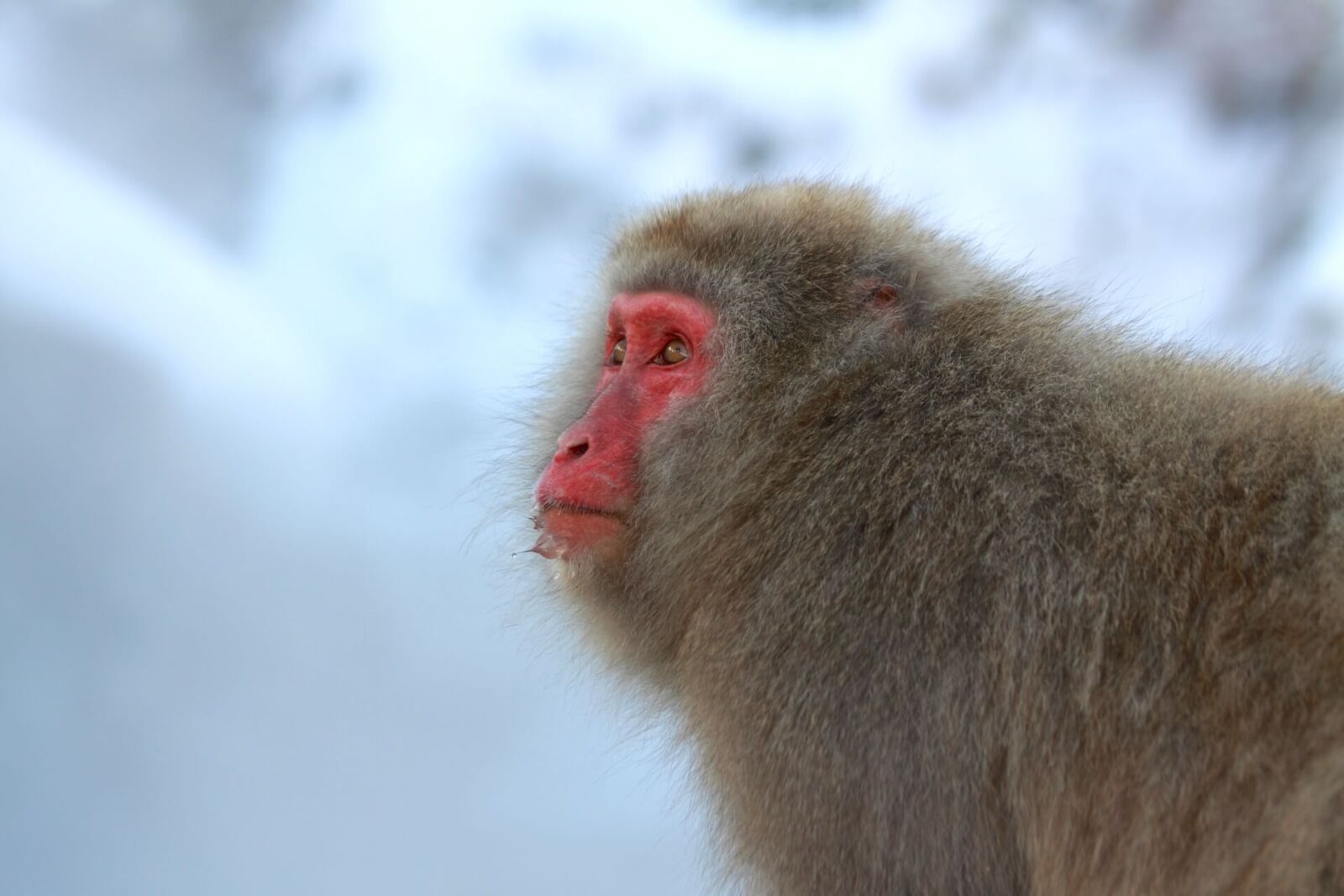

Japanese Serow
Known as ‘kamoshika’ in Japanese, is a type of goat-antelope found throughout the park. Mature kamoshika stand around 80 centimetres tall and weight 30 to 45kg and have thick black-grey coats that lighten in colour during summer. They have short horns and tails and are typically seen alone or with a partner and infant. Kamoshika are slow moving and blend into the landscape well, meaning that many visitors pass-by them without noticing. So keep your eyes open as sooner or later you’ll encounter one and seem as curious about us as we are about them.
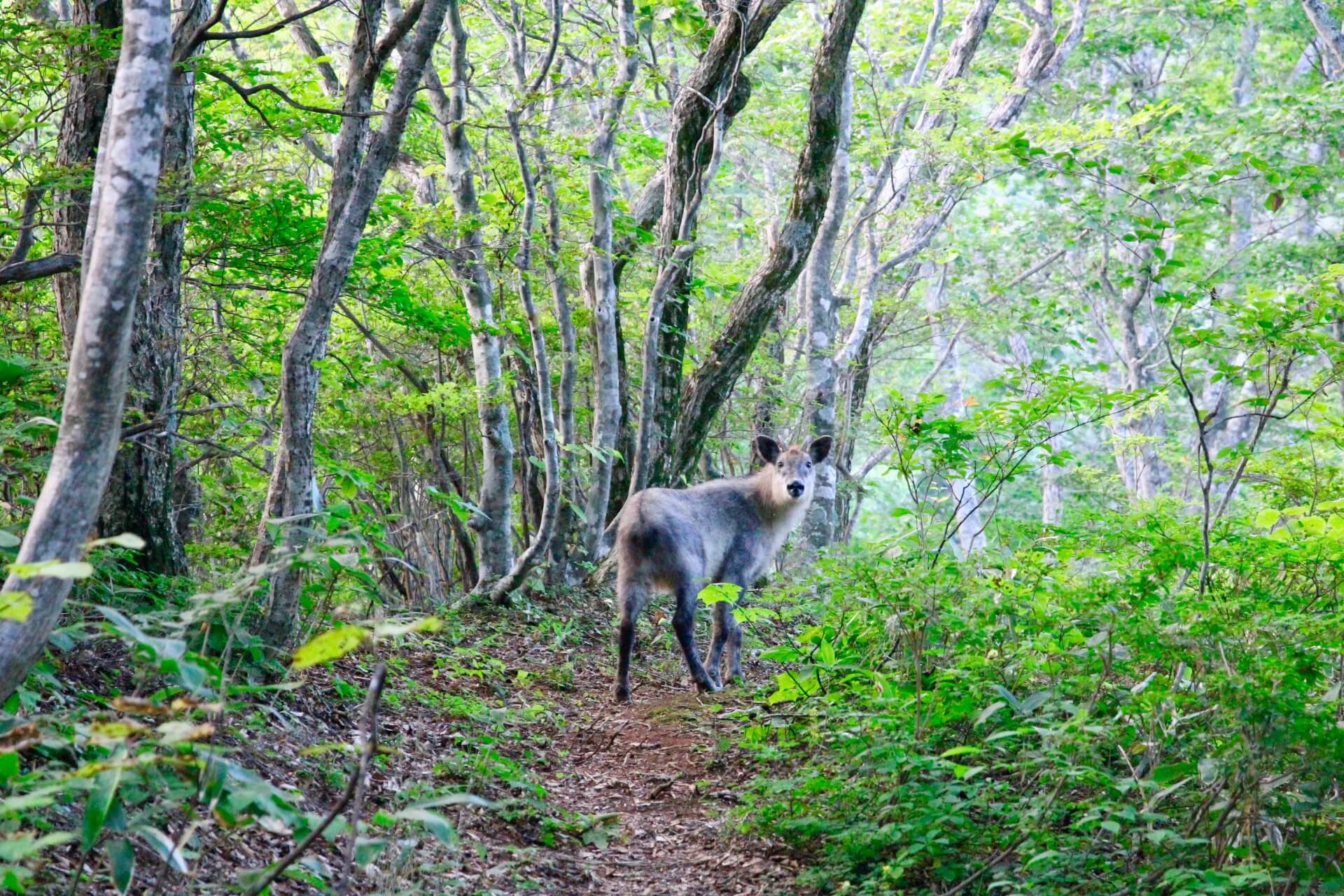
Spotted Deer
Known simply as ‘shika’, spotted deer are found-out in various countries through Asia. These medium-sized deer are somewhat unique in that they often keep their spots through adulthood, with mature shika standing between 50 to 110cm tall at the shoulders and 95 to 180 tall in full head-to-tail length. Mature stags have antlers while mature females have distinctive black bumps on their foreheads. Wild shika are typically timid but typically active through the day, so are not uncommon to see.
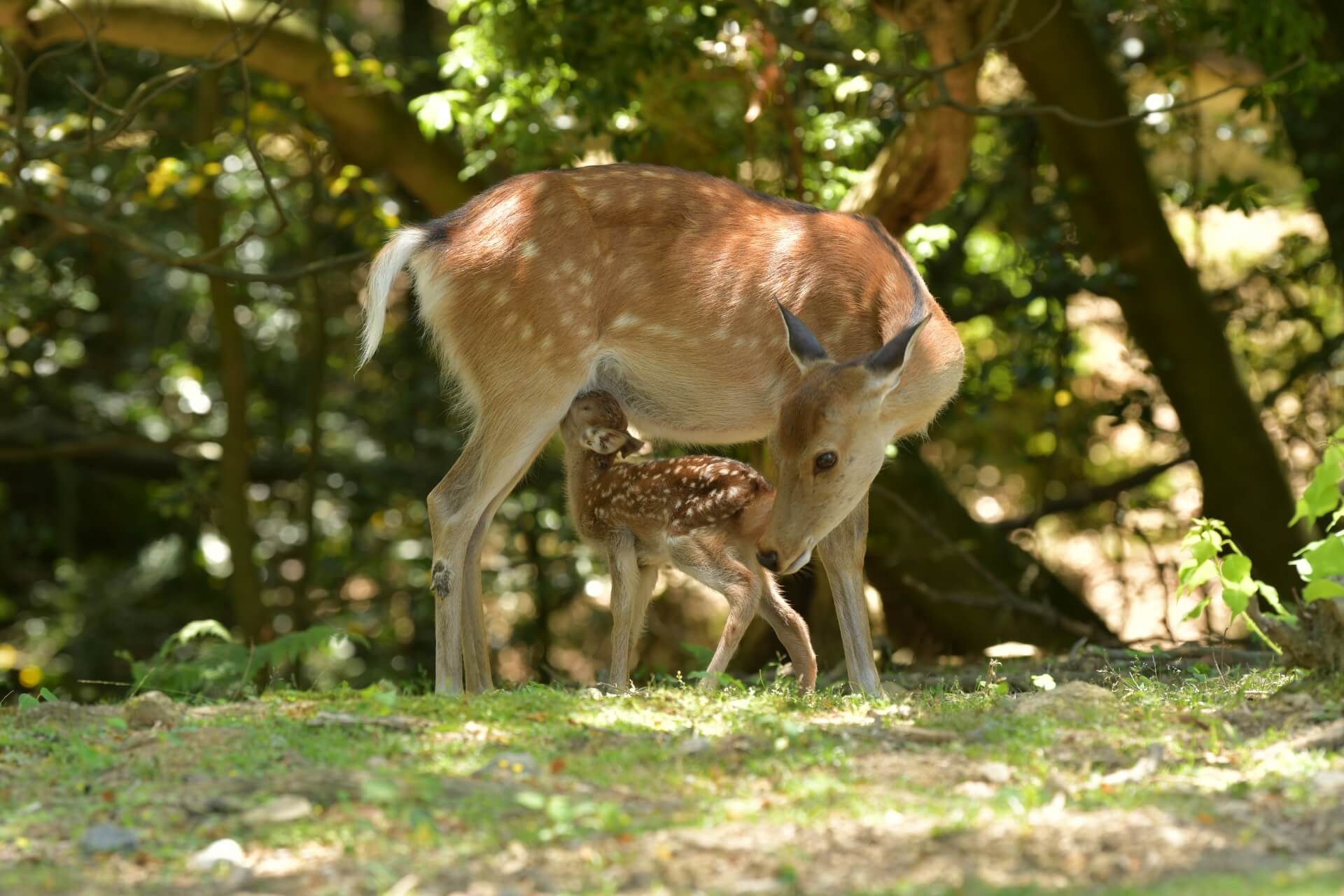
Asiatic Black Bear
Found throughout Joshinetsu Kogen, the Asiatic black bear is typically herbivorous and shy, meaning that it is usually little threat to humans. Once mature they reach around 120 to 140cm in length, with males weighing between 60 to 120kg and females weighing between 40 to 100kg. Smaller than many species of bear, they are most active from spring to autumn and hibernate through winter. National media somewhat vilifies bears following some incidents across the country, typically the result of a bear being taken by surprise and the continued encroach of humans on their habitat. While such incidents are not be ignored, the reality is that the bears are shy and while there are plenty in the national park, they are rare to see as they want nothing to do with us.
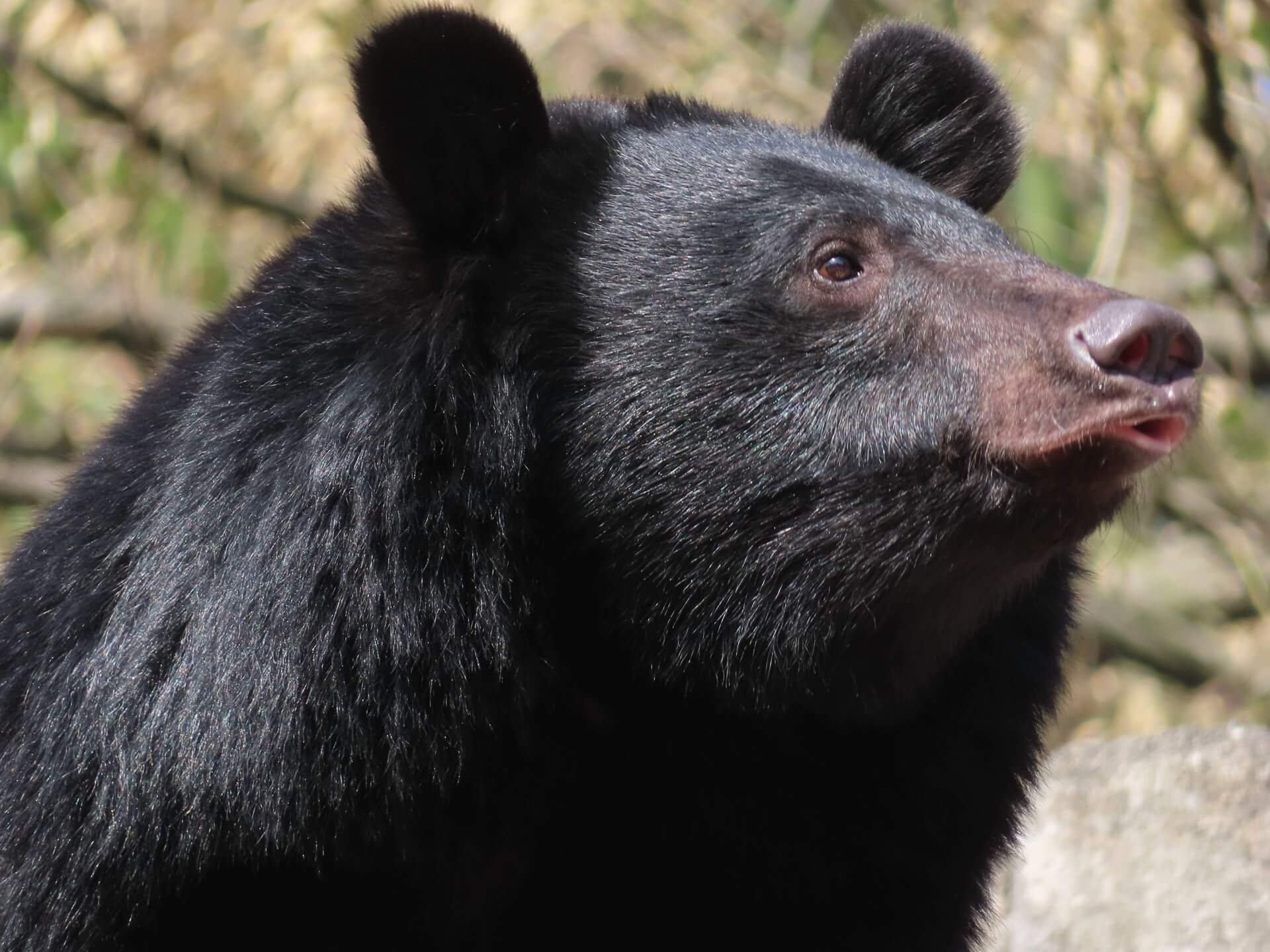
Stoat
Known as ‘okojo’, Japanese stoats are a species of weasel occupying subalpine regions i.e. habitats over 1,500 metres above sea level. Their coats remarkably seem to entirely change colour between seasons, from dark brown with a white underside during summer to almost completely white in winter.

Golden Eagle
The beautiful golden eagles of Japan can be found from Hokkaido in the north to Kyushu in the south, spanning the entire expanse of Japan’s four main islands. The diverse ecologically of Joshinetsu Kogen provides the eagles with an ideal environment with plenty of prey to hunt at all times of year.
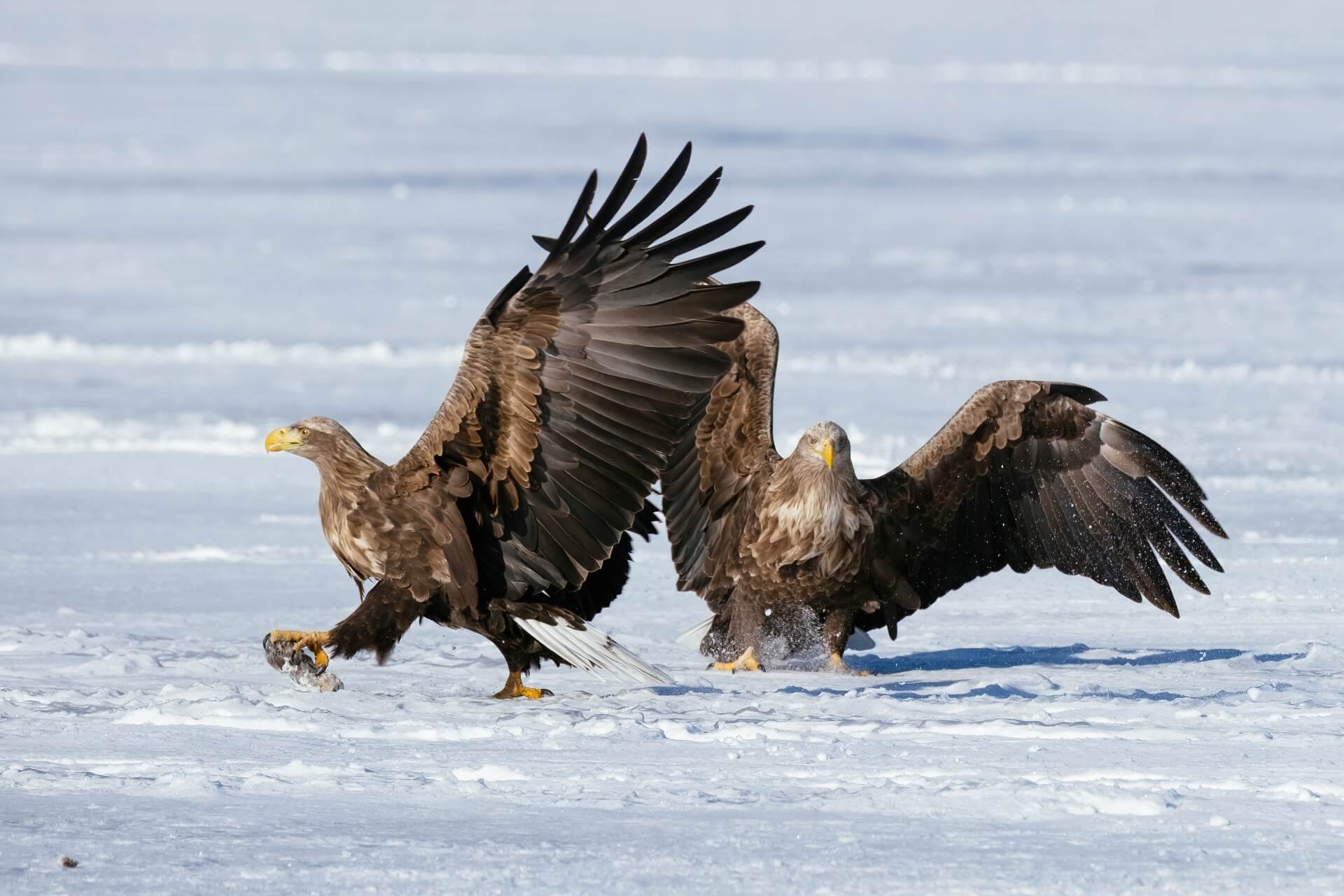
Other Birdlife
The national park boasts a diverse range of birdlife from pheasants to wagtails, forest doves, woodpeckers, owls and more. Late-spring to autumn are the best seasons for the birders out there.
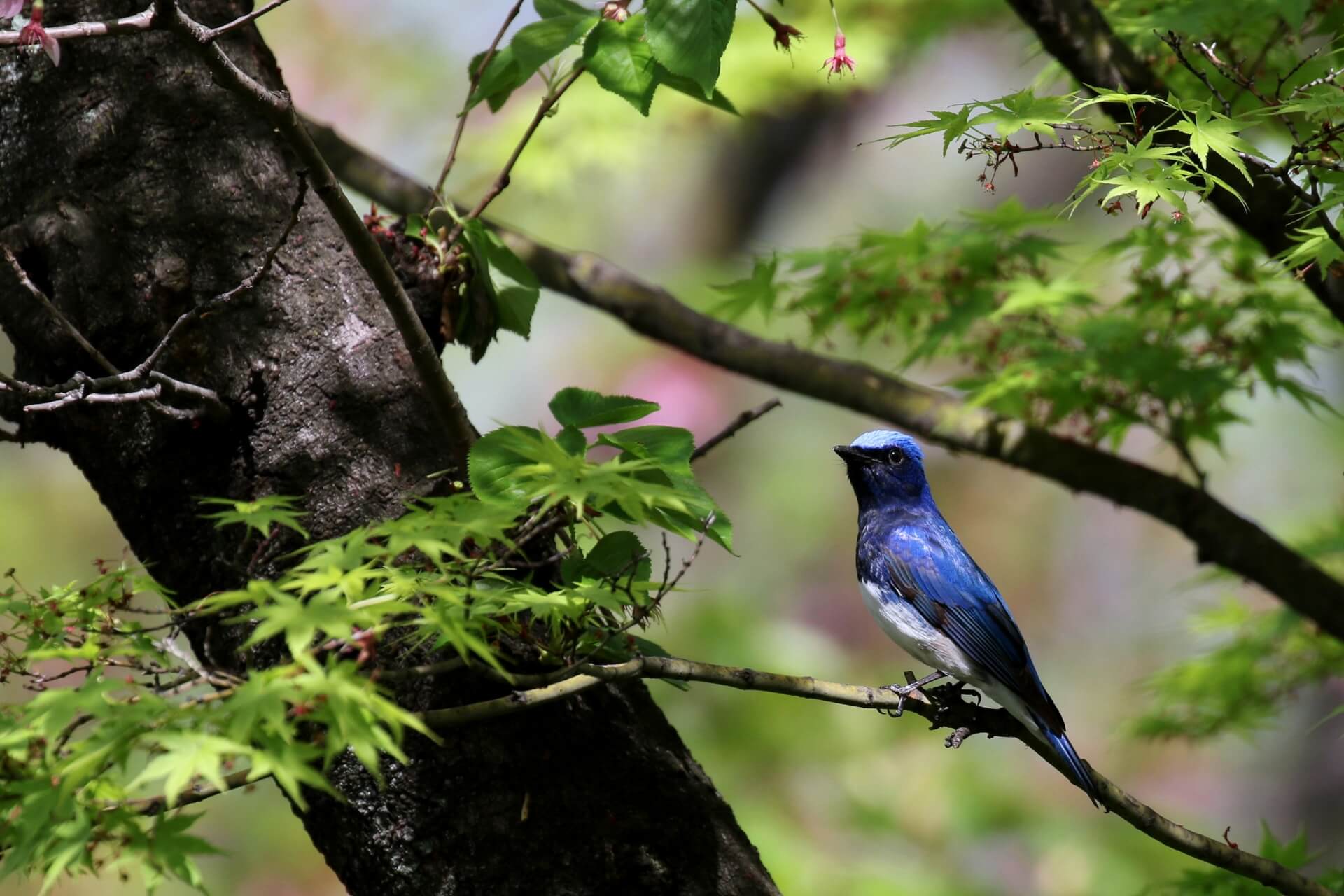
WEATHER & SEASONS
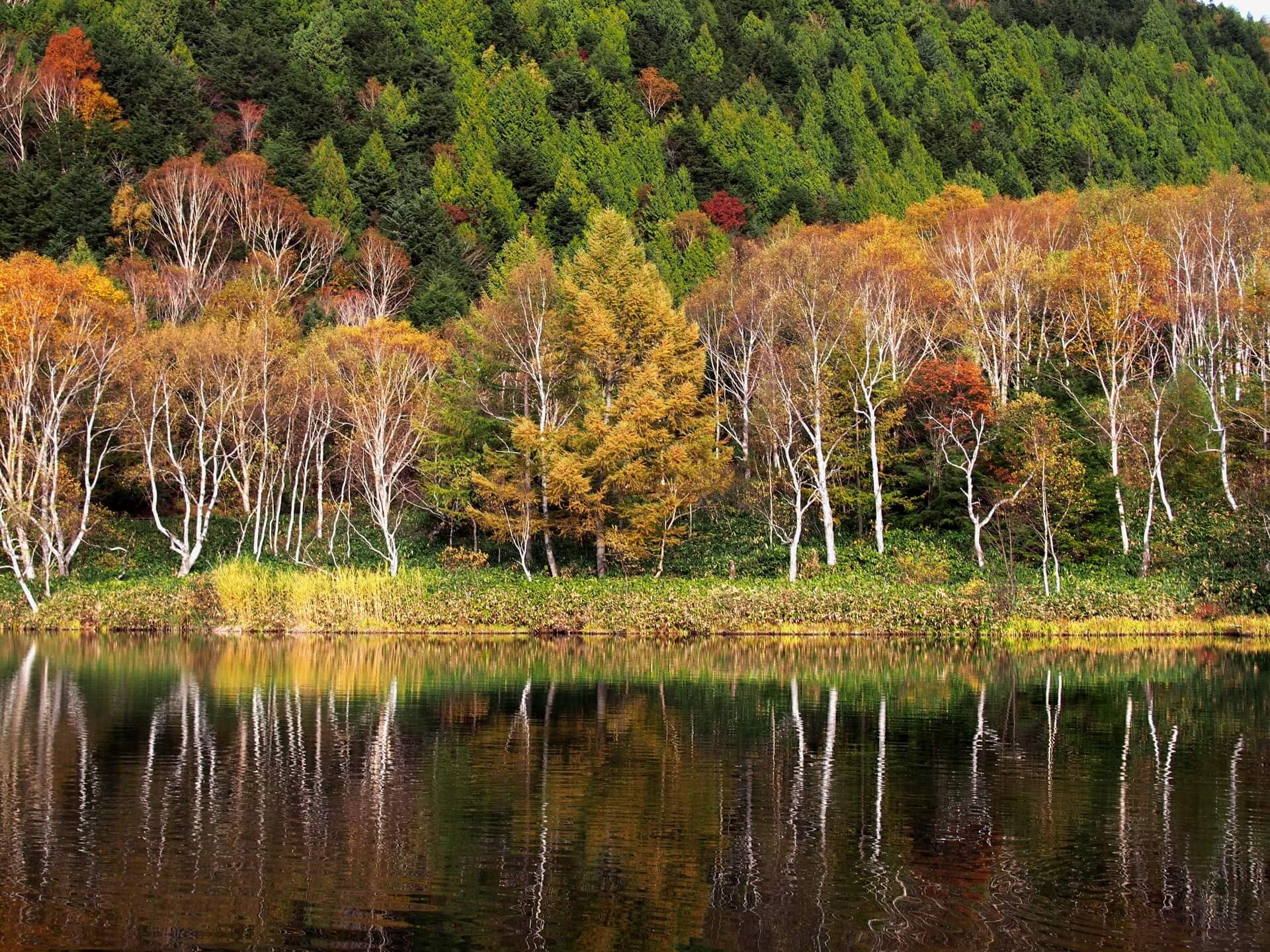
The expanse and varied topography of Joshinetsu Kogen mean that different areas have location-specific climates however generally speaking, the elevation of the park means that its climate is notably cooler than experienced in the valleys below. As a rule of thumb, subtract around 10°C from the temperature in the towns and cities nearby the park and you will have an approximate idea of the temperature at any time of year – which in summer equates to a welcome escape from the extremes of heat and humidity of Japan’s sprawling cities. Here’s a snapshot of what to expect through the seasons:
Winter / late-November to March
Joshinetsu Kogen enjoys a longer winter than most regions of Japan, with temperatures typically cold to very cold – overnight temperatures in the middle of winter can be as low as -20°C or lower – from sometime in November until March. Snowfall can occur anytime from October onward in the higher areas of 2000 metres and above, while lower areas will begin to receive snowfall from mid-November onward. By December much of the park is likely to be covered in snow, with the heaviest falls occurring anytime from December through to early-March. With that, it’s no surprise that the big attraction in winter is skiing and snowboarding. Nestled within the overall park, Shiga Kogen Ski Resort is Japan’s largest and highest ski resort – located between 1330 to 2307 metres – and boats Nagano’s longest ski season, while the joint resorts of Naeba Ski Resort and Kagura Ski Resort offer Niigata’s largest expanse of ski fields.
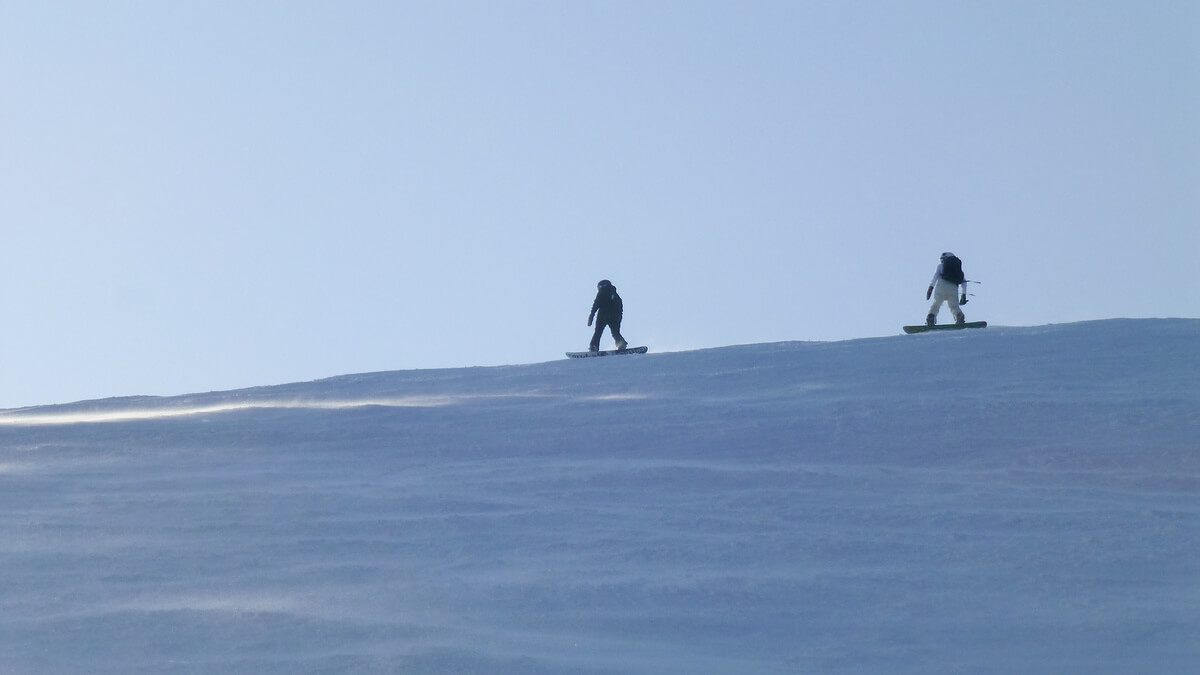

Spring / late-March to June
The park can still experience heavy snowfall in March with decreasing falls through April while scattered snow showers well into May are not uncommon. Areas of Shiga Kogen Ski Resort should remain open until late-April or even into May, and as the snow retreats, it’s a great time explore the park using snowshoes. As the winter fades and spring takes hold, wildlife is active and visitor numbers are at their lowest, allowing visitors to enjoy Joshinetsu Kogen with plenty of freedom. Given the altitude of the park, cherry blossoms trees aren’t abundant but you might catch a couple here and there.
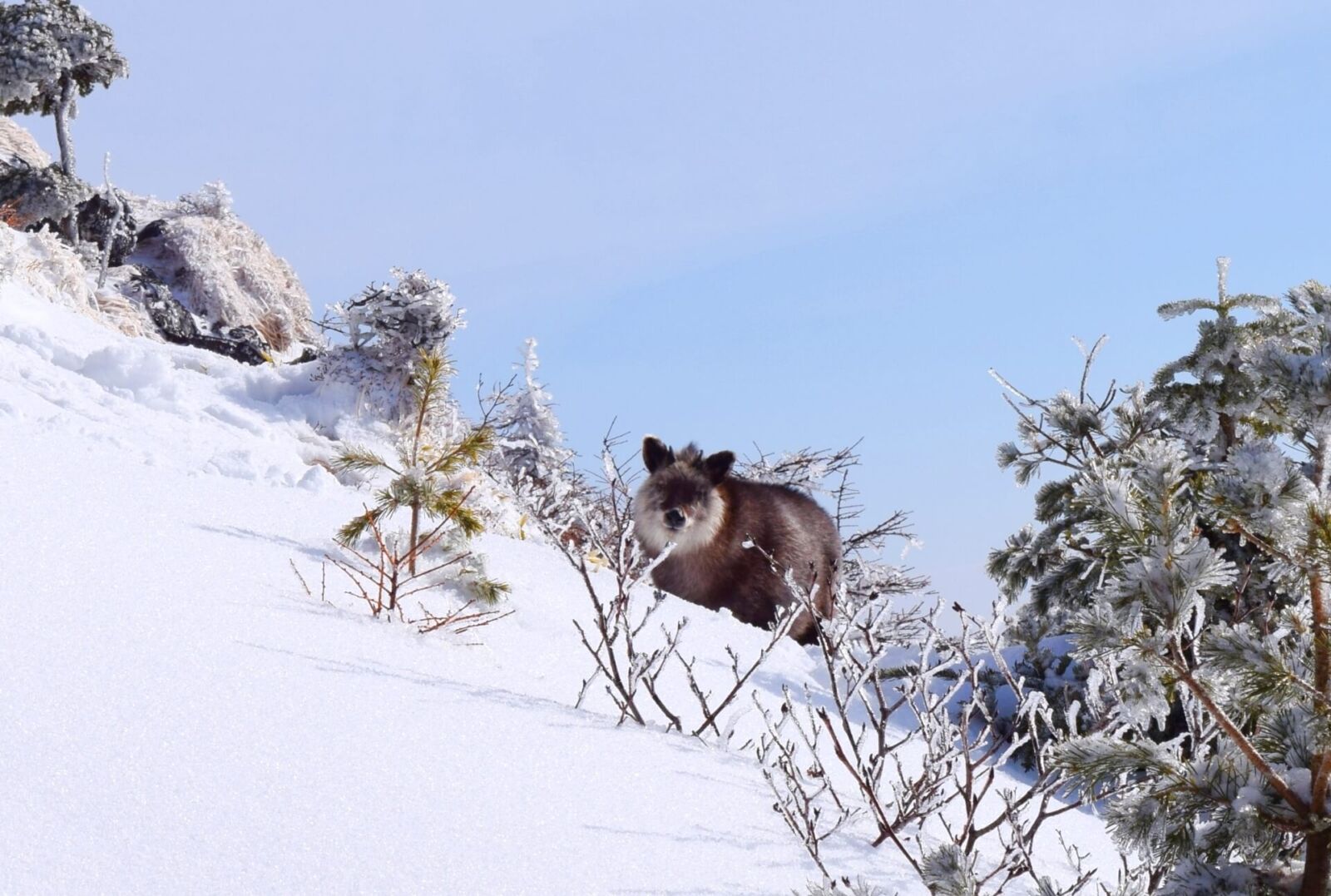
Summer / July to August
Joshinetsu Kogen’s summer is notably shorter than most areas in Japan, offering visitors welcome escape from the extremes of heat and humitiy in many cities. Generally-speaking, the temperature will be around 10°C less than that forecast in the cities and towns below. The higher elevation also means much less humidity, meaning that days are warm but often with a cool breeze and a crisp, pleasant temperature at night. Summer is all about hiking, running and cycling as the snow disappears and the parks many hiking trails are open. Spanning-out across Joshinetsu Kogen, there are trails suitable for all levels of experience and fitness, with many of chairlifts and gondolas now operational again after a short hiatus post-ski season – see below for details. Making use of them is a great way to access some of the higher reaches of Joshinetsu Kogen, where in summer, you’ll often find a spectacular display of alpine flowers and birdlife.
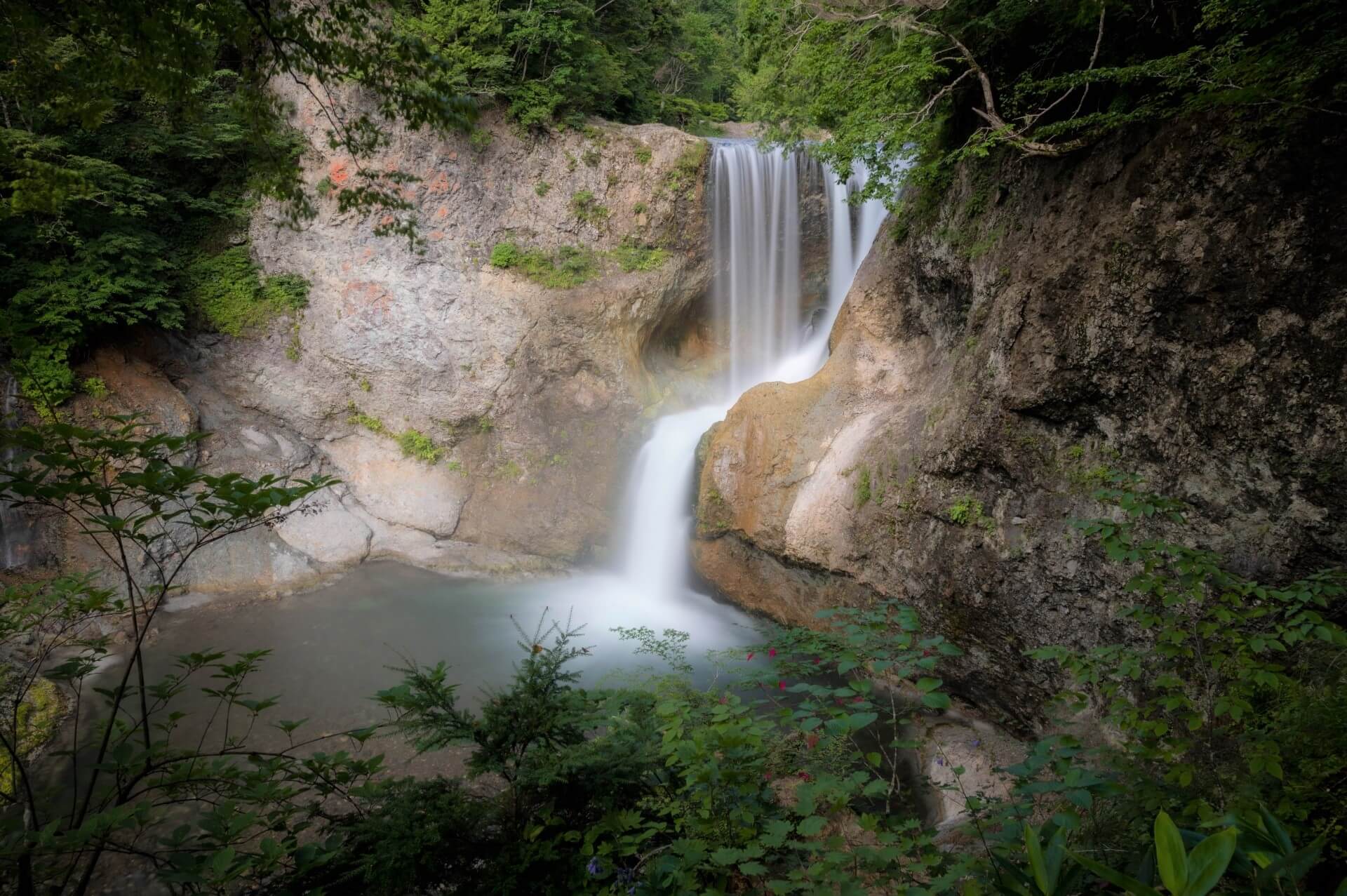
Autumn / September to mid-November
The shorter summer means that autumn takes hold from September onward in which time Joshinetsu Kogen is blessed with some of Japan’s most spectacular autumn colours. Known as ‘koyo’ in Japanese, the autumn leaves are also best enjoyed by taking advantage of the chairlifts and gondolas that will remain open until late-October or early-November, before closing in preparation for the coming ski season. Autumn is also one of the best times of year to enjoy the many hot springs of Joshinetsu Kogen, which feel particularly indulgent in the cooling autumn weather and falling leaves.
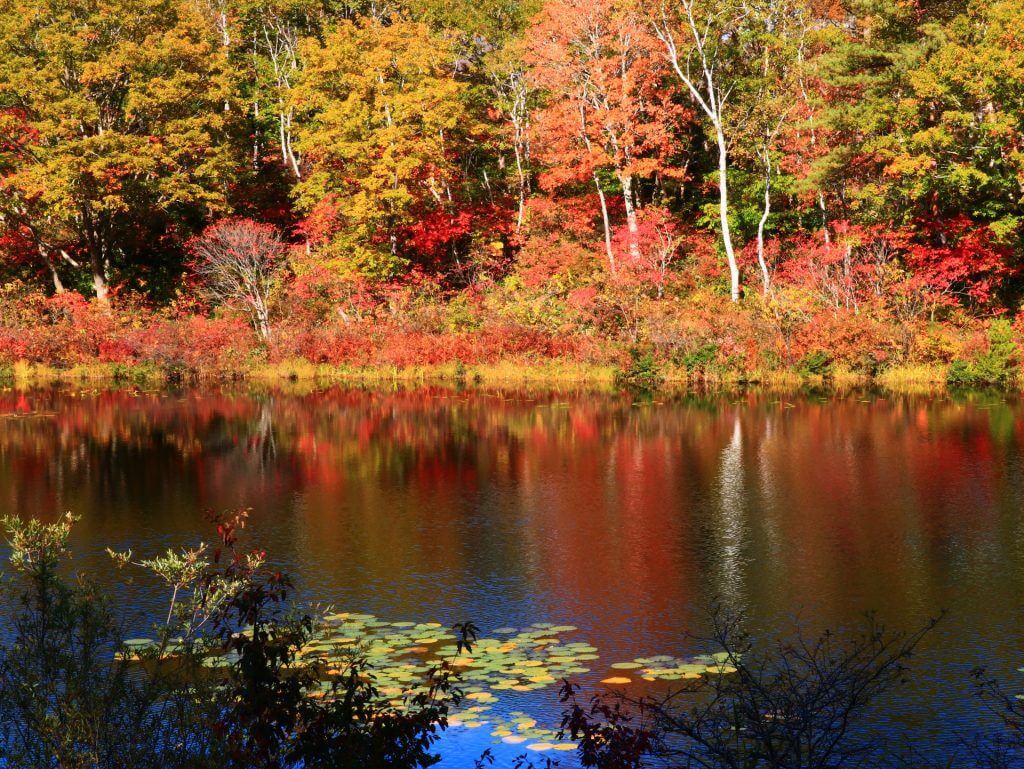
GONDOLAS, ROPEWAYS & CHAIRLIFTS
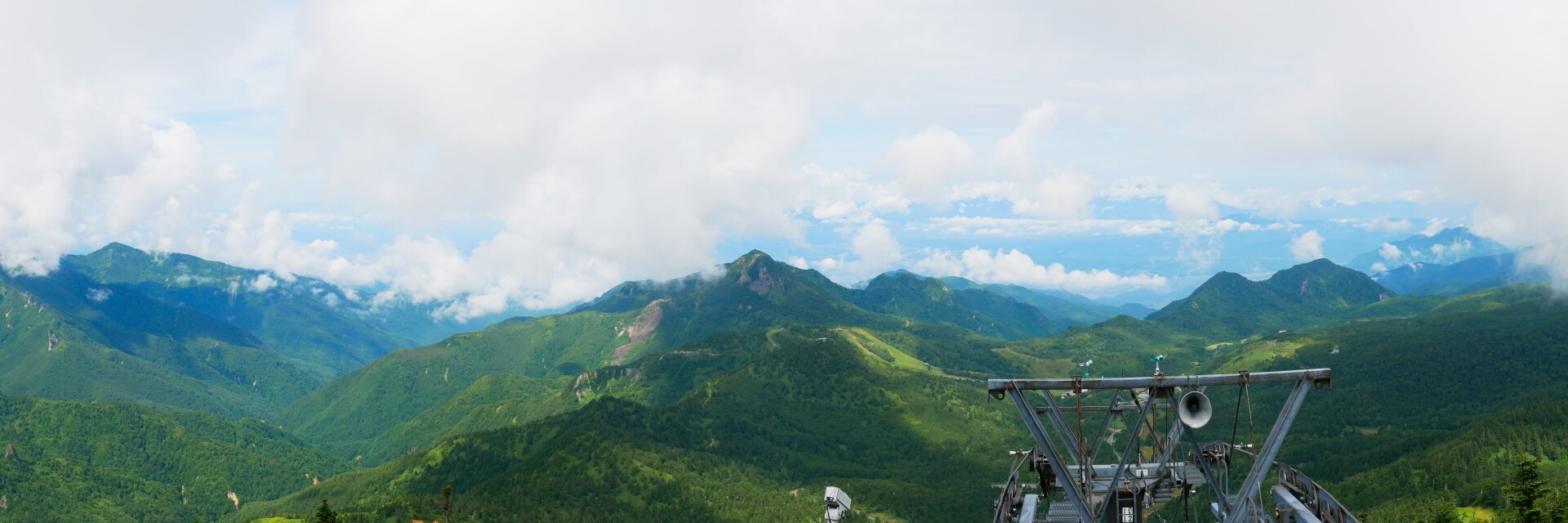
Joshinetsu Kogen has multiple gondolas, ropeways and chairlifts dotted throughout the park. Servicing the ski resorts through winter, many remain operational from late-spring through to autumn with brief hiatuses either side of winter.
Shiga Kogen area: boasts the largest number of chairlifts and gondolas in Joshinetsu Kogen – a total of more than fifty serving Shiga Kogen Ski Resort in winter. Of those, the ‘Higashidateyama Ropeway’ operates from mid-July to early-October, providing access to an alpine botanical garden. The ‘Yokoteyama Chairlift’ operates from late-May to late-October and can lay claim to being the highest chairlift in Japan, reaching 2307 metres above sea level.
Naeba/Kagura area: are connected by the ‘Dragondola Ropeway’ which at 5.5km in length, is one of the longest ropeways in the world. Connecting the ski resorts of Naeba and Kagura in winter, the ropeway is open from late-spring through to autumn. At its most spectacular in October and November thanks to the stunning autumn leaves, a visit to Mount Naeba should be on the itinerary for any visitor to nearby Yuzawa town.
Yuzawa area*: serviced by Echigo-Yuzawa Station and the Joetsu Shinkansen running from Tokyo, Yuzawa is a historic hot spring town and western gateway to the national park. The ‘Yuzawa Kogen Ropeway’ is open from late-April to early-November and provides access to the Yuzawa Panorama Park Alpes and Alpine Botanical Gardens and activities including a zip line, bob sled and go karts. Restaurants and walking trails are located to the summit, with fantastic views of the surrounding mountains.
Mt Tanigawa area: is home to the ‘Tanigawadake Ropeway’. Outside of winter, the ropeway is open from April to November and ascends to 1,321 metres above sea level where it provides access to some fantastic hiking trails, and in autumn, some of Central Japan’s most spectacular leaves in the surrounding forests.
*Please note, Yuzawa is located on the perimeter of the national park however is not part of Joshinestu Kogen.
HIKING & WALKING TRAILS IN JOSHINETSU KOGEN NATIONAL PARK
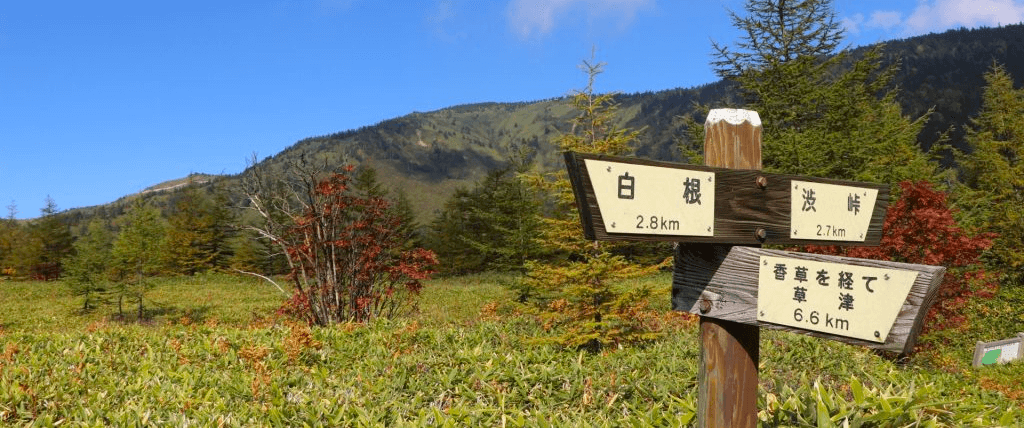
The park boasts some of Central Japan’s best hiking and leisurely walking, with trails suitable to all levels. Ranging from expert mountaineering to leisurely walks suitable to anyone of moderate fitness, escaping high into the alpine valleys and mountains of the park offers an escape from the daily grin and in summer, welcome relief from the heat and humidity of the cities. For more information about hiking and walking in Joshinetsu Kogen, see our ‘Best Trails in Nagano’ page.
ACCOMMODATION inc. HOT SPRING VILLAGES
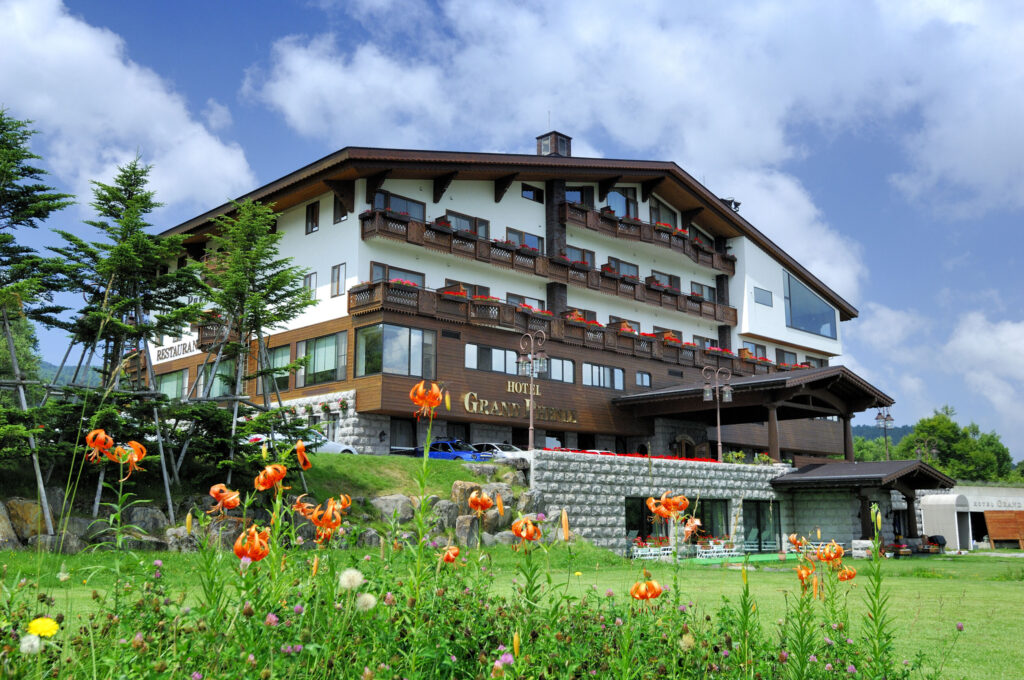

Visitor to Joshinetsu Kogen are spoiled for choice with accommodation spread throughout park including multiple hot spring villages which count amoung some of the most famous in Japan. When planning your visit, we recommend the following areas:
Shiga Kogen Ski Resort / Highlands
Roughly corresponding with Shiga Kogen Ski Resort, this area of the park is easy to access from Nagano Station and includes many of its best attractions including Mt Kusatsu-Shirane, multiple gondolas and chairlifts, fantastic alpine walking, plenty of wildlife and of course, some of Japan’s best skiing and snowboarding.
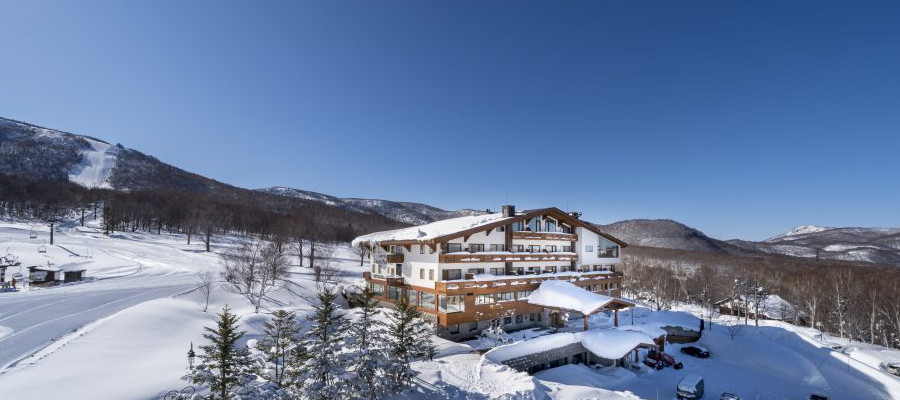
Located in the Okushiga ski fields of Shiga Kogen, Hotel Grand Phenix offers high-end, ski-in/out accommodation deep in the national park. From spring to autumn, the hotel is ideally-placed from where to explore the national park on foot, by bicycle or by car. Blending European alpine style with Japanese service, Hotel Grand Phenix is our choice of accommodation in Shiga Kogen. For further listings, in this area of the national park, see our ‘Shiga Kogen Area’ hotel page.
Yamanouchi / Snow Monkey Area
As the western gateway to Joshinetsu Kogen, Yamanouchi boasts three hot spring towns – Yudanaka Onsen, Shibu Onsen and Kanbayashi Onsen* – including numerous ‘ryokan’ (traditional guesthouses). Many if not most have their own in-house hot springs and serve traditional ‘kaiseki’ (multi-course) menus using local, seasonal ingredients.
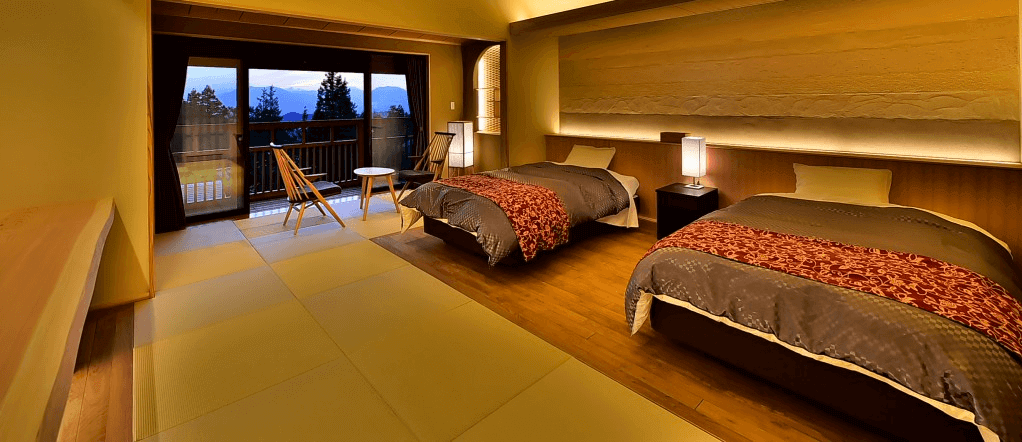
Amoung them, we recommend Hotel Senjukaku. Located in Kanbyashi Onsen, Senjukaku is within easy walking distance of the Jigokdauni Monkey Park and offers guests an indulgent stay on the doorstep of the national park. A favourite with the Japanese royal family, Senjukaku is renowned for its ‘kaiseki’ meal service, multiple hot springs and traditional service. For further listings in the area, see our ‘Yamanouchi – Home of the Snow Monkeys’ hotel page.
Manza Onsen
Located nearby Mt Kusatsu-Shirane, the small hot spring town of Manza Onsen draws its thermal water from the volcano. Known for its bright-coloured, acidic and sulfuric waters, Manza Onsen won’t be for everyone however some travelers will love it. Deep in the national park, this is a dramatic and unique landscape in which the water runs white, bright blue or vivid green. For acccomodation listings in the area, see our ‘Manza Onsen Area’ hotel page.
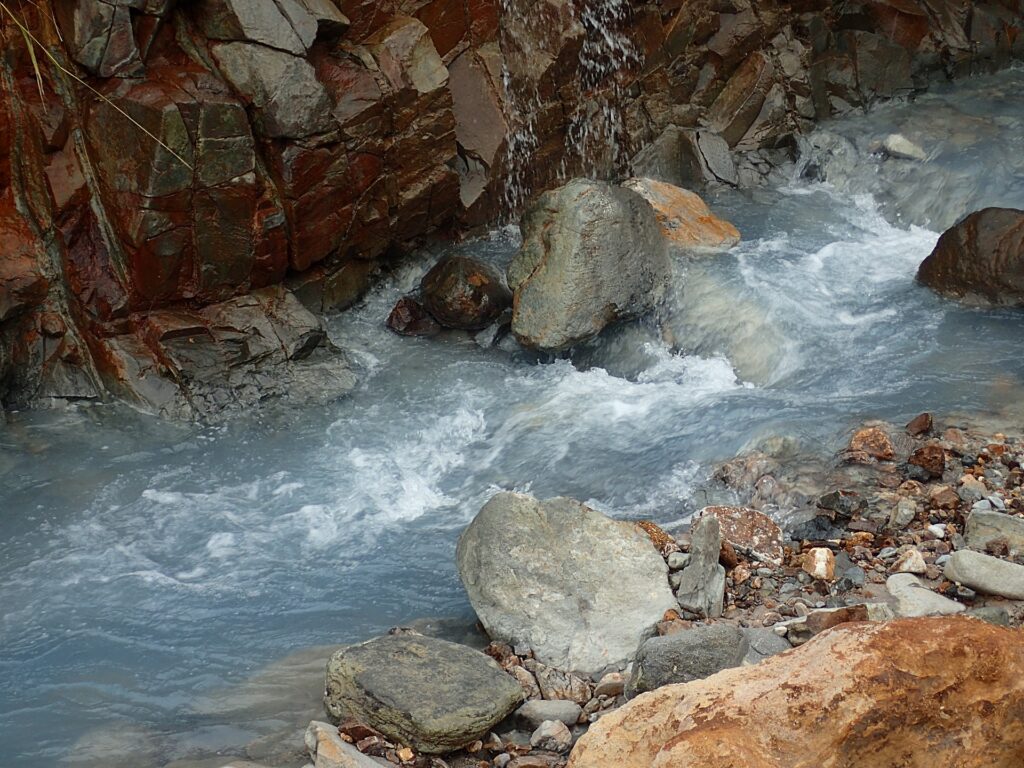
Shima Onsen
Located on the eastern edge of the park, Shima Onsen is one of the four famous hot spring towns of Gunma Prefecture. Nestled in a beautiful valley, visitors can enjoy a tranquil getaway in this quaint, traditional town. Over forty hot spring sources feed the baths of the towns many ‘ryokan’ (traditional guethouses, large hotels, public baths and mineral springs dotted throughout the town. For acccomodation listings in the area, see our ‘Shima Onsen Area’ hotel page.
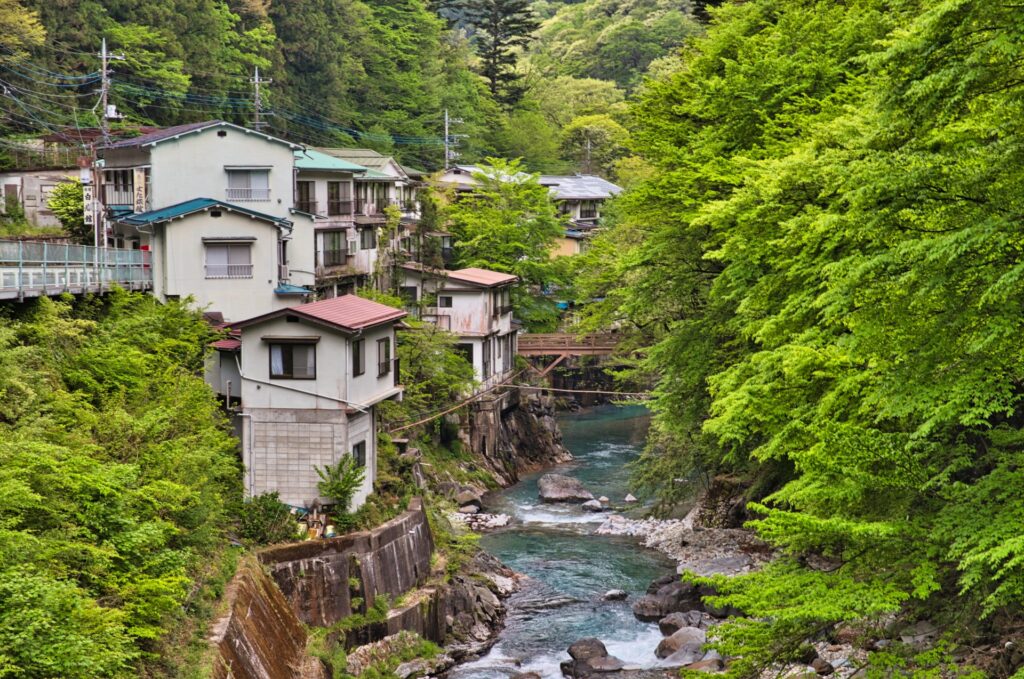
Kusatsu Onsen
One of the most famous hot spring towns in Japan, Kusatsu Onsen is another of Gunma’s four famous onsen villages. Set high in the Joshinetsu Kogen National Park and drawing its water from the thermal activity of nearby Mt Kusatsu-Shirane, Kusatsu Onsen is truly unique. Centred around its iconic ‘yubutake’ – an immense open-air ‘hot water field’ over which the thermal water flows in order to cool, before being used to fill the baths of the town’s many guesthouses – Kusatsu is within easy reach of nearby Karuizawa and a great point from where to explore the national park. For accommodation listings in the area, see our ‘Kusatsu Onsen Area’ hotel page.
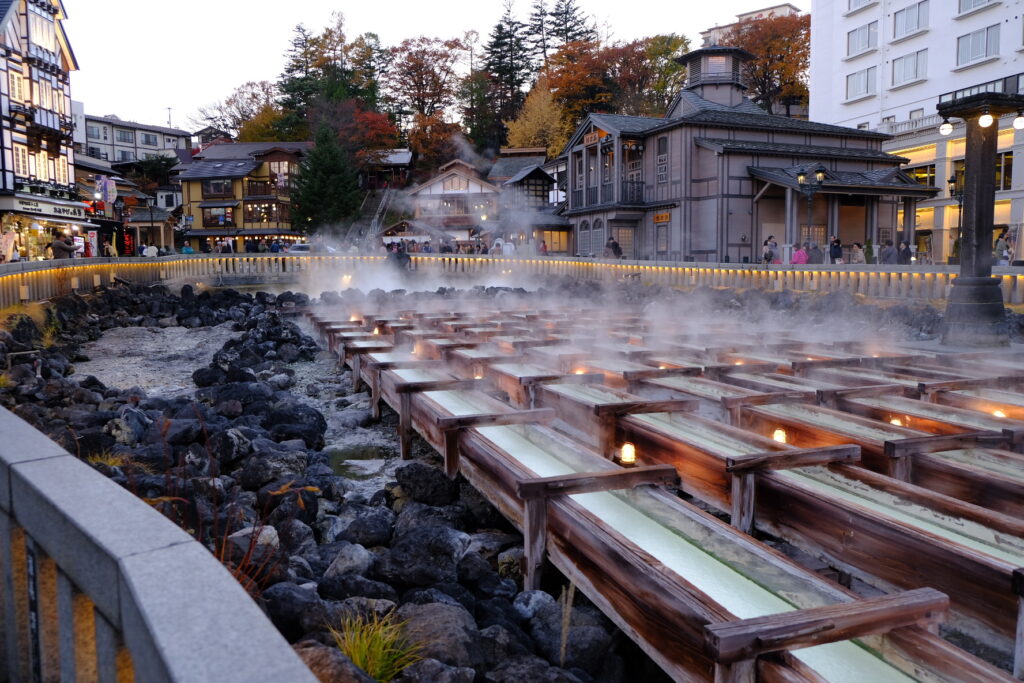
Karuizawa*
As the southern gateway to the national park, Karuizawa is a popular mountain resort town boasting lots of fantastic hotels, restaurants and shopping. Easily accessible using the Hokuriku Shinkansnen from Tokyo, staying in Karuizawa adds a little luxury to your experience of the park and all within easy access of Mt Asama and other popular attractions. For accommodation listings in the area, see our ‘Karuizawa Area’ hotel page.
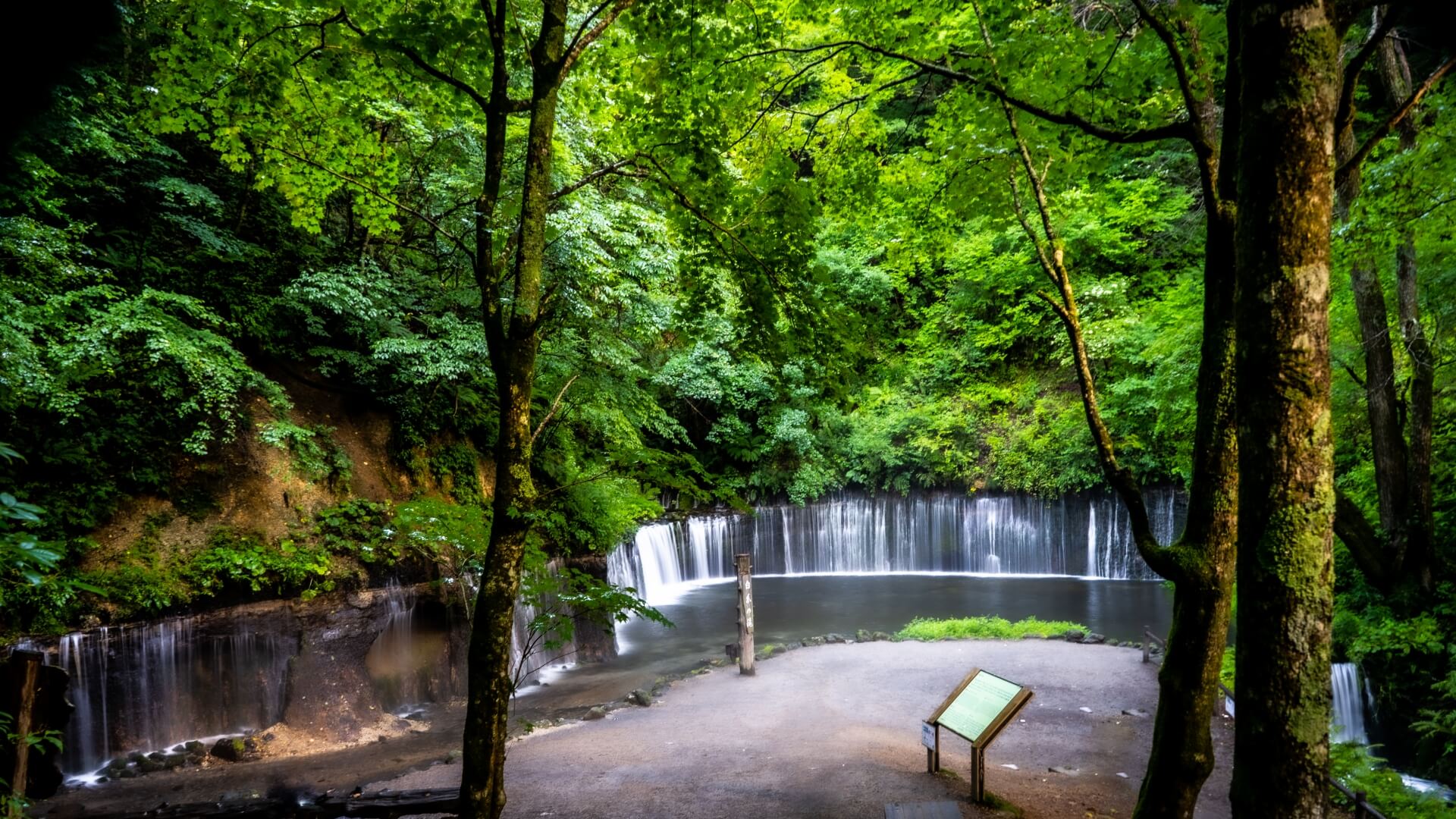
Yuzawa*
The hot spring town of Yuzawa acts as the eastern access point for the national park, from where visitors are within easy reach of Mt Naeba and Mt Tanigawa – both accessible using public buses from Echigo-Yuzawa Station. Yuzawa itself is a very famous hot spring town with numerous ‘ryokan’ (traditional guesthouses) and large hotels providing a good range of options. For accommodation listings in the area, see our ‘Yuzawa Area’ hotel page.
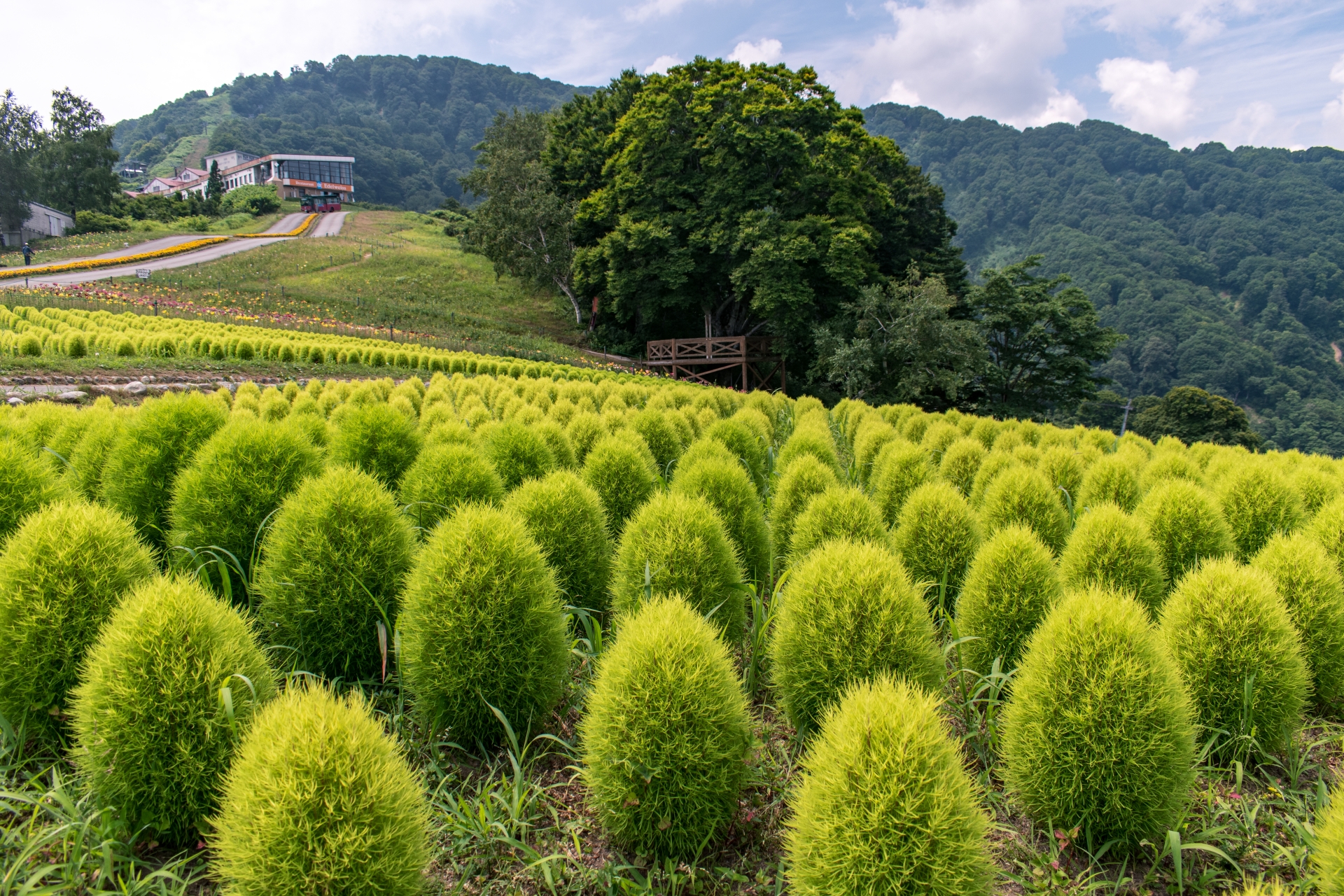
*Please note, Yudanaka Onsen, Shibu Onsen, Kanbayashi Onsen, Karuizawa; and Yuzawa are all located on the perimeter of the national park however are not part of Joshinestu Kogen. However, the close proximity of each town to Joshinetsu Kogen allows for for easy access while each offers lots of accommodation options and are all easy to reach using public transport making them the ideal point from where to explore the national park.
GETTING TO & AROUND JOSHINETSU KOGEN
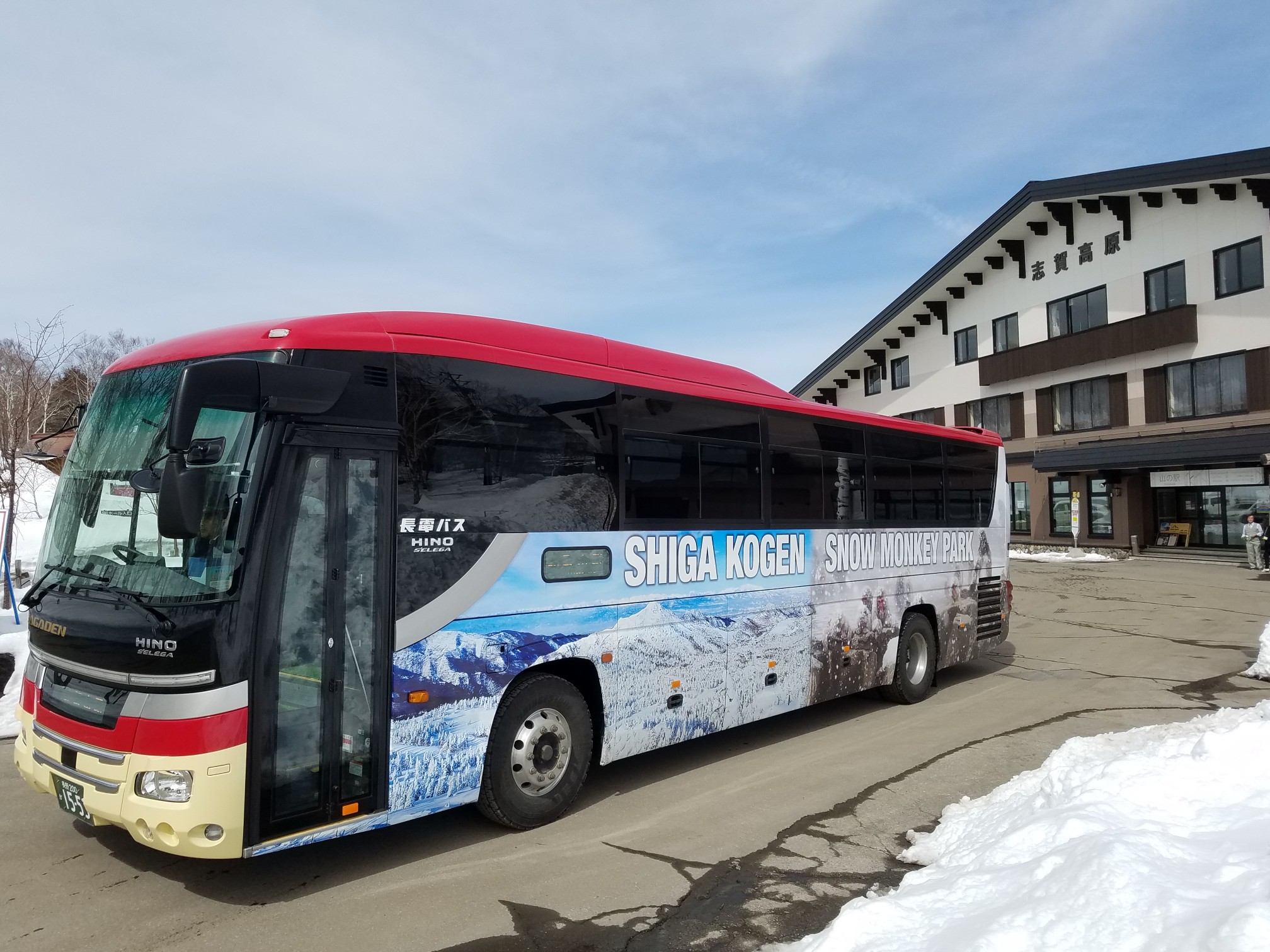
Given the size of the national park, planning a visit including how to get there and move around can appear a little confusing. But it is in fact fairly straight-forward when you divide the park into regions and the following three access points/towns*:
Approaching from the west: as a stop on Hokuriku Shinkansen line running from Tokyo to Kanazawa, Nagano Station is only 50-minutes drive from the foothills of Joshinetsu Kogen National Park with express bus services running from the station to the Shiga Kogen Mountain Station. From there, visitors can switch to local bus services operating to many areas of the national park. Enroute from Nagano, you will pass the Yamanouchi area – home of the Snow Monkeys and multiple hot spring towns including Yudanaka Onsen, Shibu Onsen and Kanbayashi Onsen. Sitting at the foothills of the national park, Yamanouchi is the western gateway to the expansive park and the nearest access point to areas including Shiga Kogen Ski Resort, Shiga Kogen Highlands and western start point of the Kusatsu Shirane Kogen Route.
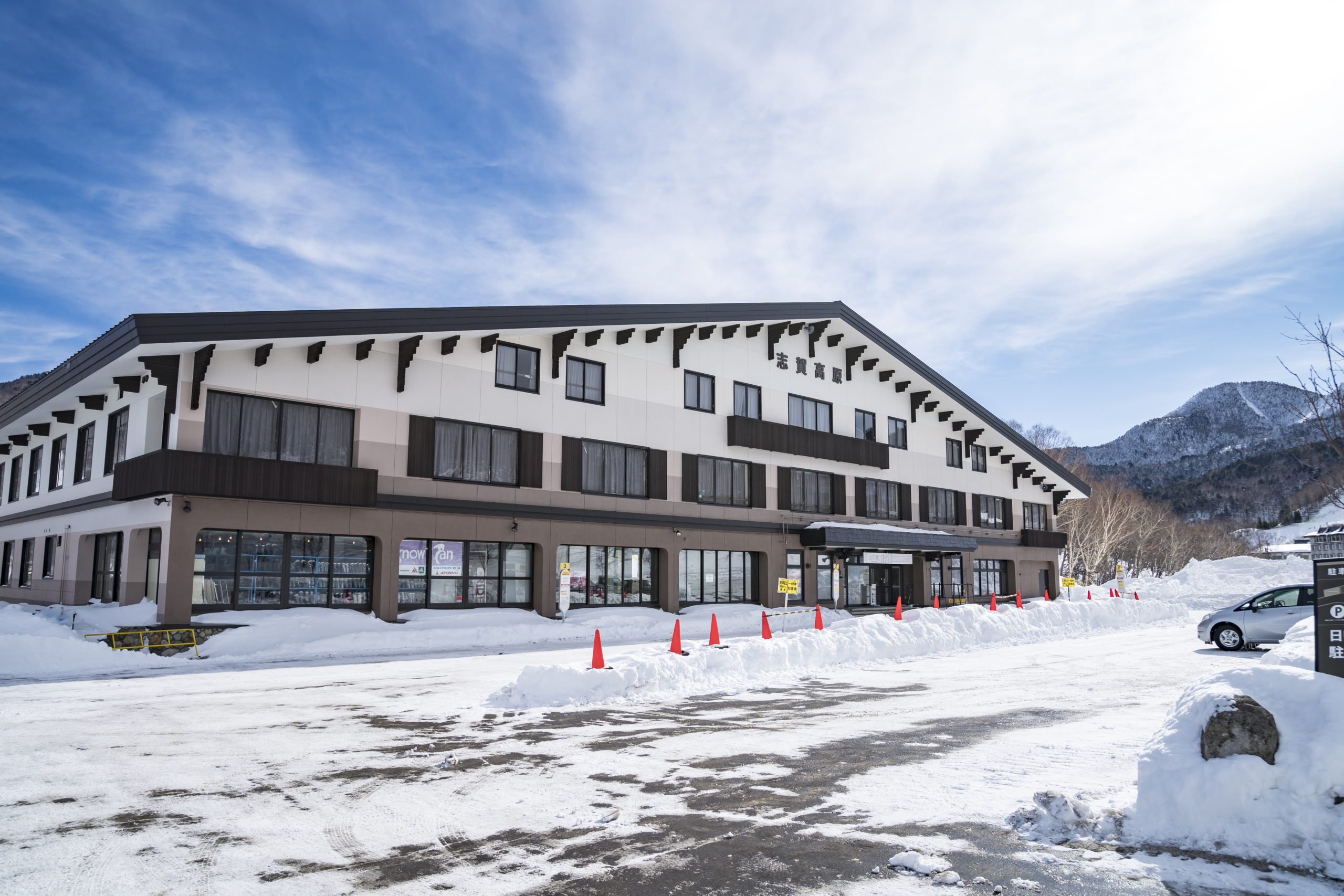
Approaching from the south: also a stop on the Hokuriku Shinkansen line, Karuizawa Station also puts you within easy reach of the park and is the closest access point to Kusatsu Onsen, Mt Asama and Onioshidashi Volcanic Park and the Kusatsu Shirane Kogen Route (and onto Yamanouchi in the west).
Approaching from the north-east: a stop on the Joetsu Shinkansen line running from Tokyo to Niigata, Echigo-Yuzawa Station is the nearest access point Mt Naeba and Mt Tanigawa.
*Please note, the access points/towns listed above – Yudanaka Onsen, Shibu Onsen and Kanbayashi Onsen; Karuizawa; and Yuzawa – are all located on the perimeter of the national park however are not part of Joshinestu Kogen. However, the close proximity of each town to Joshinetsu Kogen allows for for easy access while each offers lots of accommodation options and are all easy to reach using public transport making them the ideal point from where to explore the national park.
BOOK WITH US! NAGANO’S NO.1 TOUR & CHARTER OPERATOR
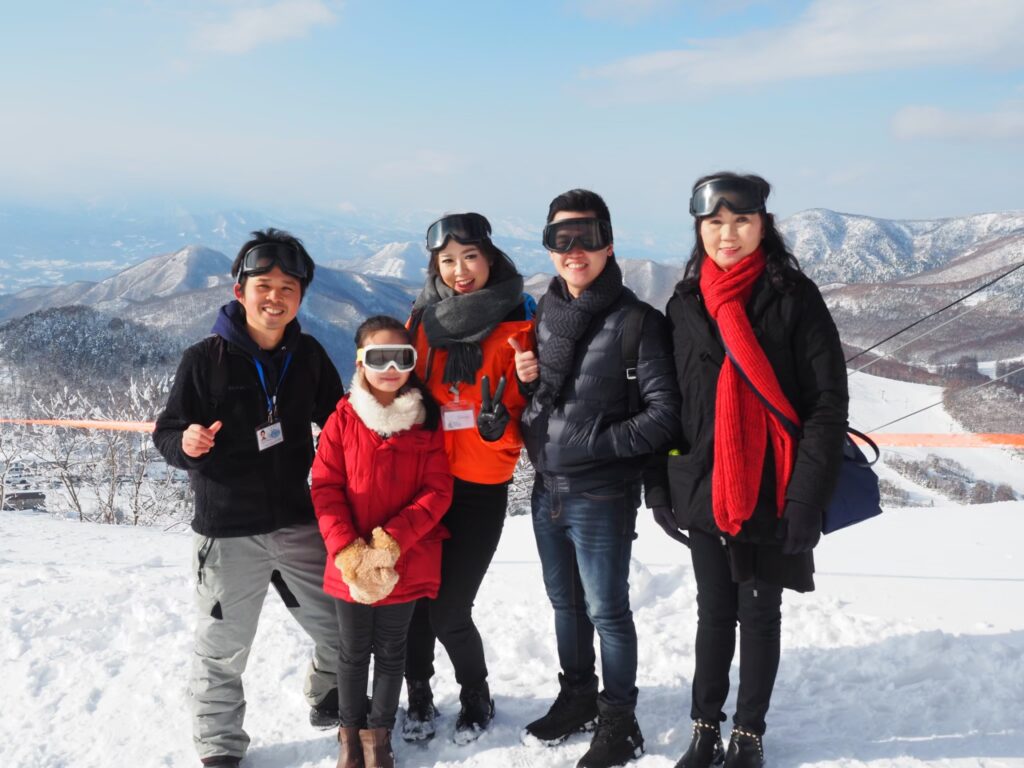

Want to discover everything that Joshinetsu Kogen National Park has to offer? Locally-based and operating all year round, Snow Monkey Resorts is Nagano’s No.1 tour and charter operator. We have the local knowledge of where and when to go, to help you discover and enjoy the many attractions of the park.
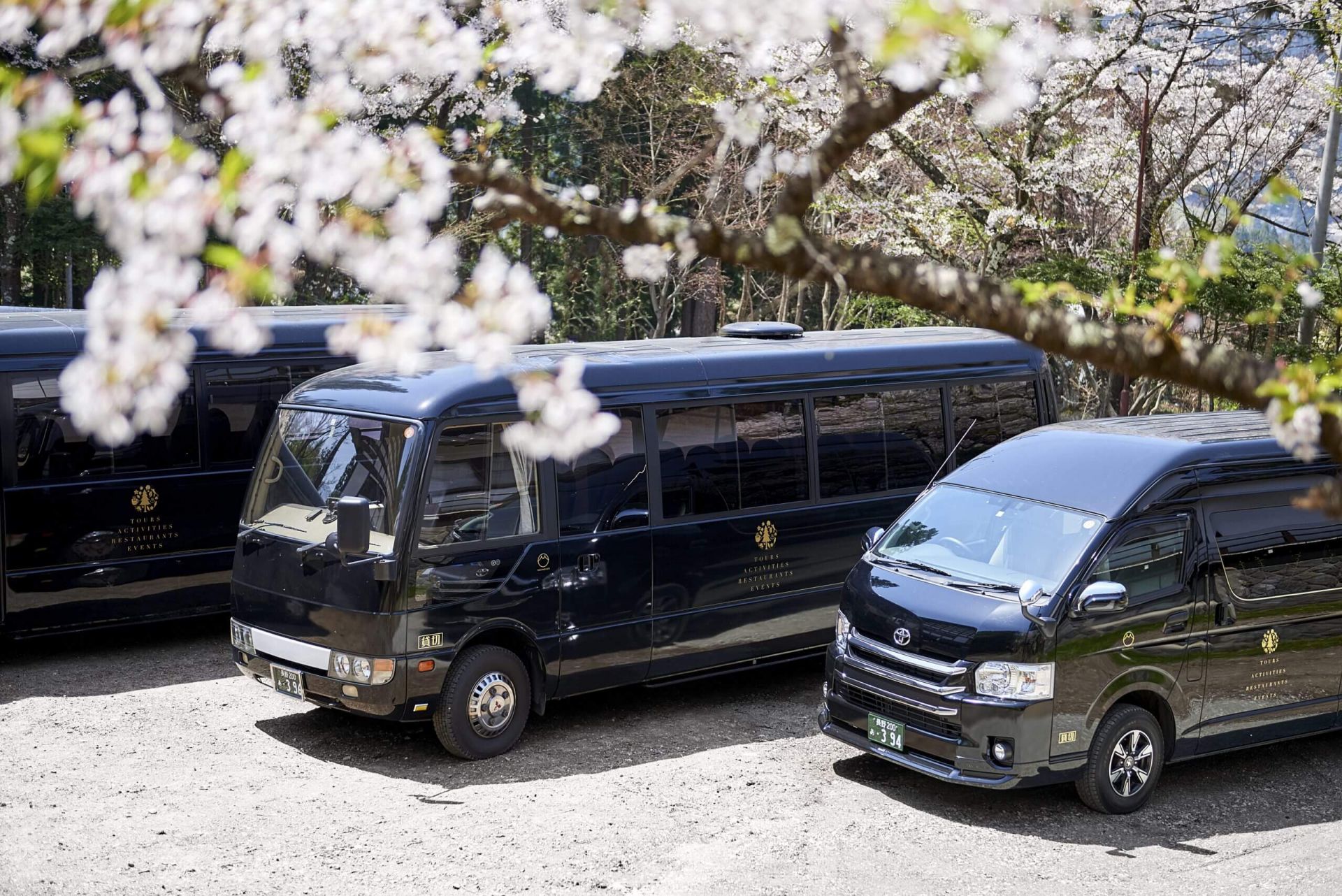
For guests wanting to access Joshinetsu Kogen in the comfort of their own transport, we can arrange a private tour or charter customised to fit your needs, starting and ending at any destination including from/to Nagano Station and any resort in the region. Our drivers and vehicles are fully certified, allowing us to transport you to and from your preferred destinations in combination with any activity that suits your schedule.

All vehicles are fitted with a protective screen – separating the driver from passenger and luggage area – and our drivers wear protective masks, allowing you to move between your destinations in comfort and safety.
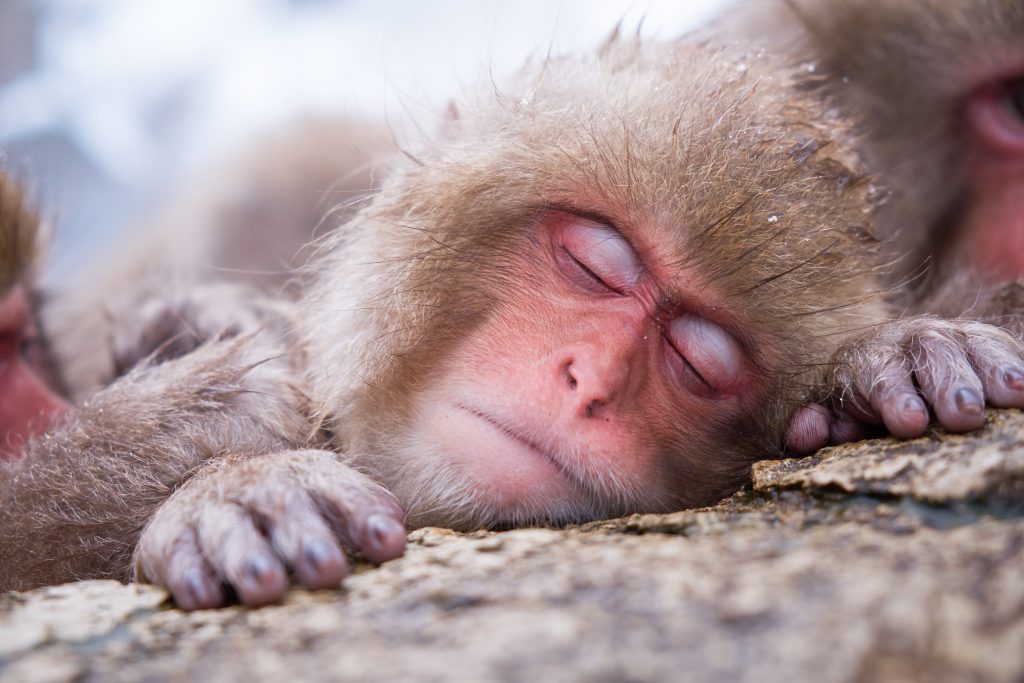

We can arrange both private tours with an English-speaking guide or a private charter, including a private vehicle and driver but without a guide. We’d love to be part of that experience and help you discover even more!
Why choose us?
Awarded a 2022 TripAdvisor Travelers’ Choice Award for our 1-Day Snow Monkeys, Zenko-ji Temple & Sake Tour – recognised as one of the Top 10 Experiences in Japan – we have the local knowledge and experience to help you get the most out of your time in Nagano and Central Japan.
Got a question about visiting Nagano and Central Japan this winter? Contact us and let’s get planning together!



